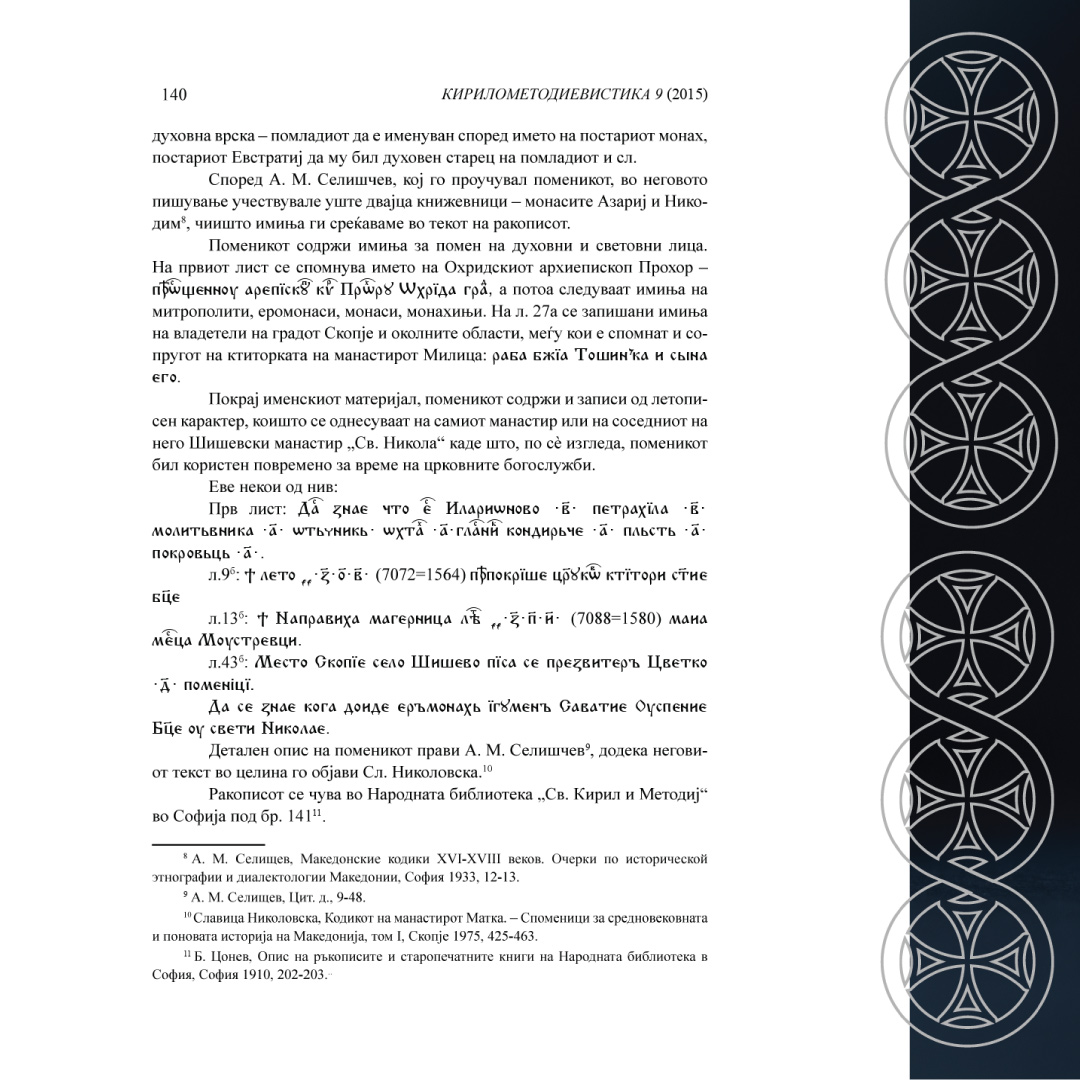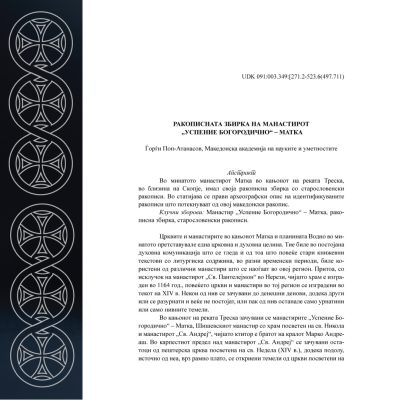There are several Church-Slavonic books in manuscript on which are left records that are also the property of the monastery of the Dormition of the Most Holy Theotokos in Matka.
They were written, and used during the services, in the period from the XIV to the beginning of the XX century.
They are a testimony to the literary activity of the monks in the monastery, continuously through the five century’s, following in the footsteps of the Slavic teachers Saints Cyril and Clement of Ohrid, whose frescoes were also painted in the altar of the monastery church.
Their elaboration was announced by academician Gjorgji Pop-Atanasov, with whom we share it with you.
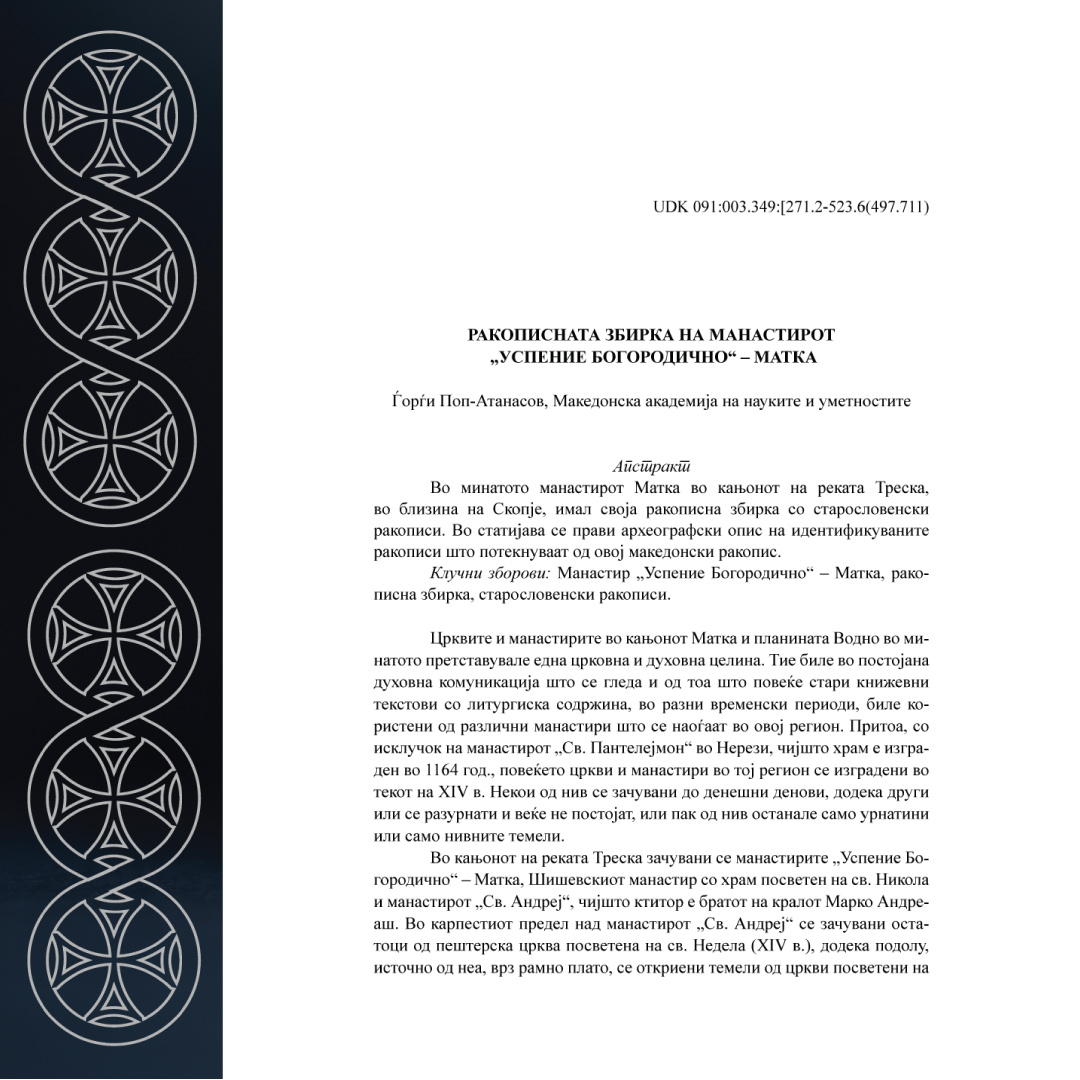
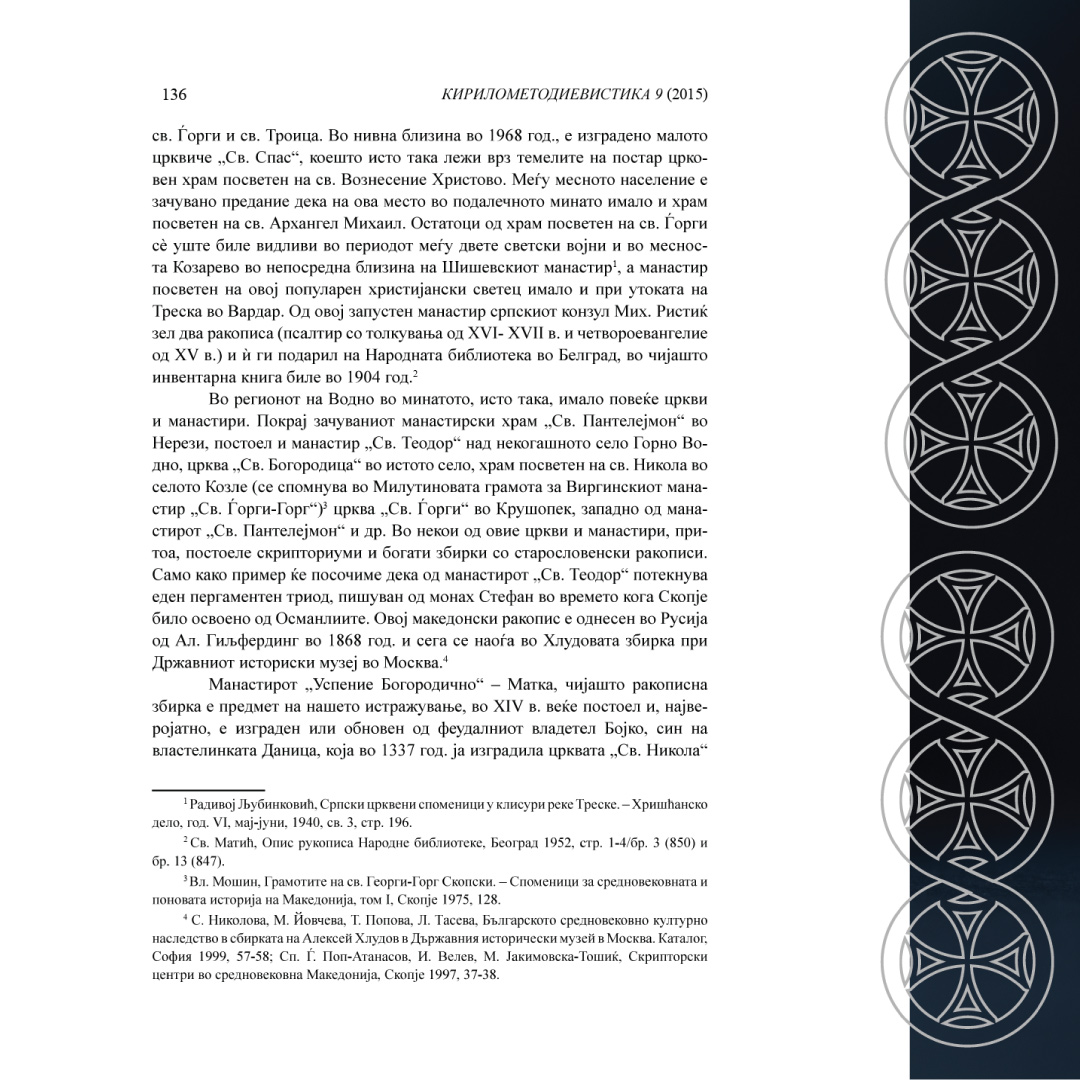
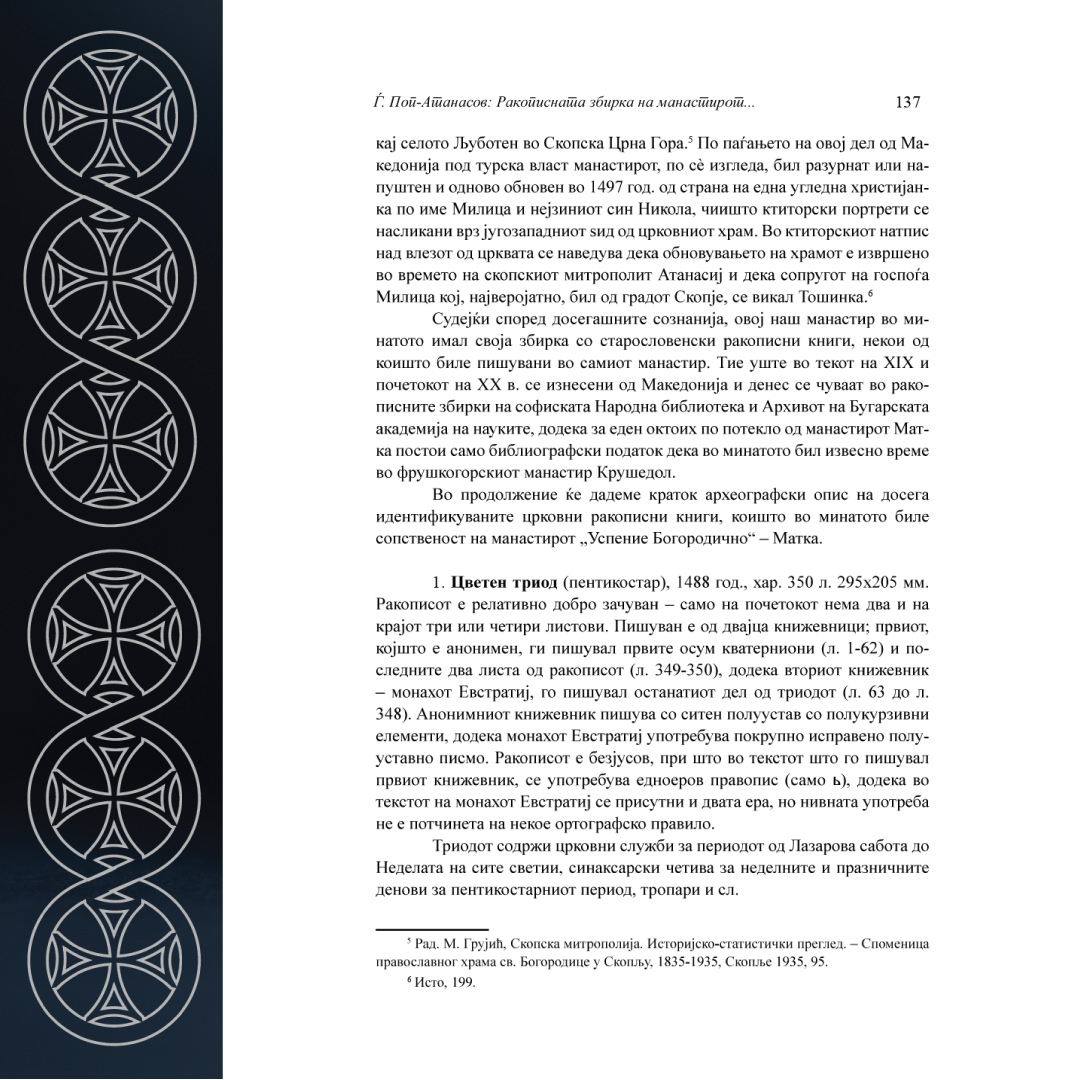
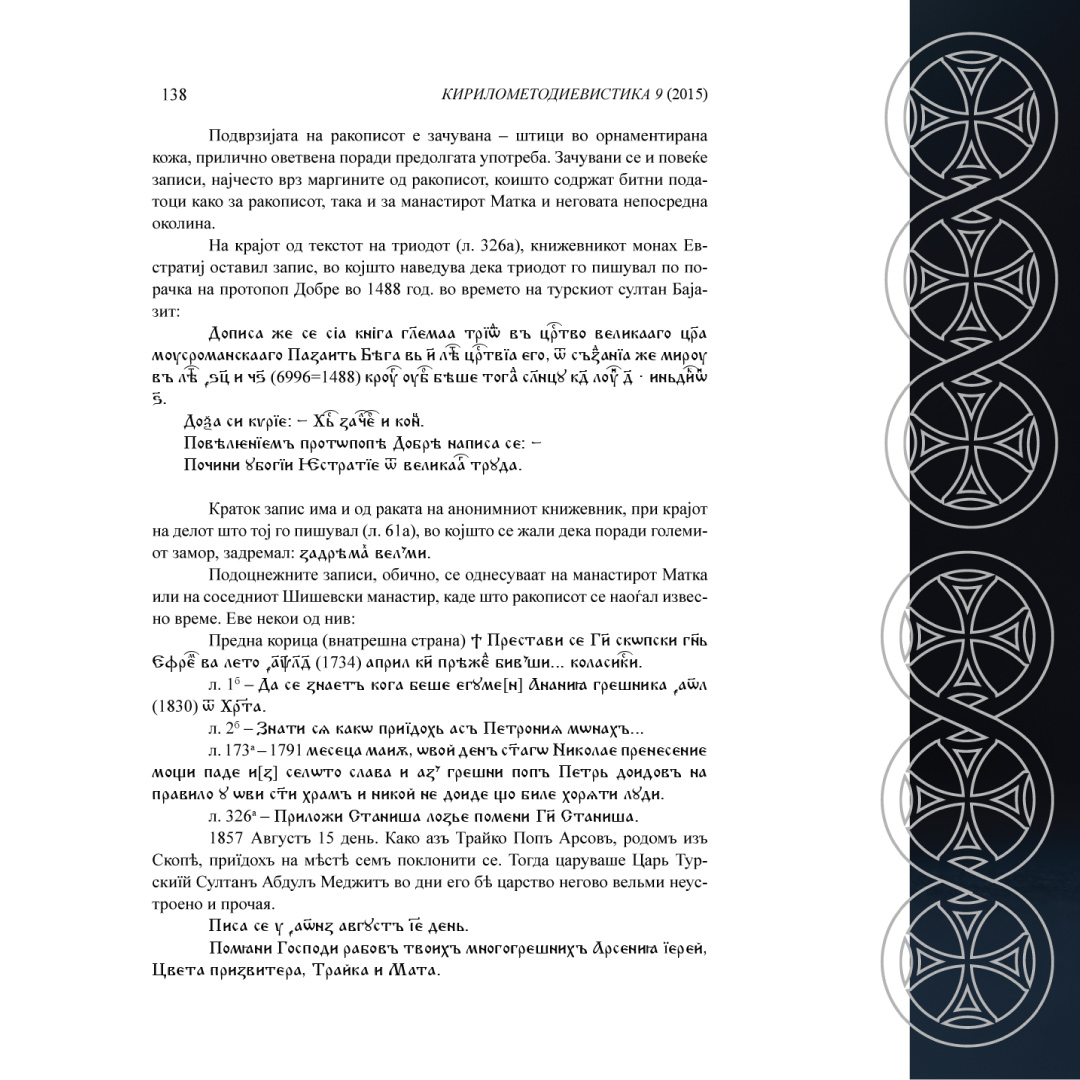
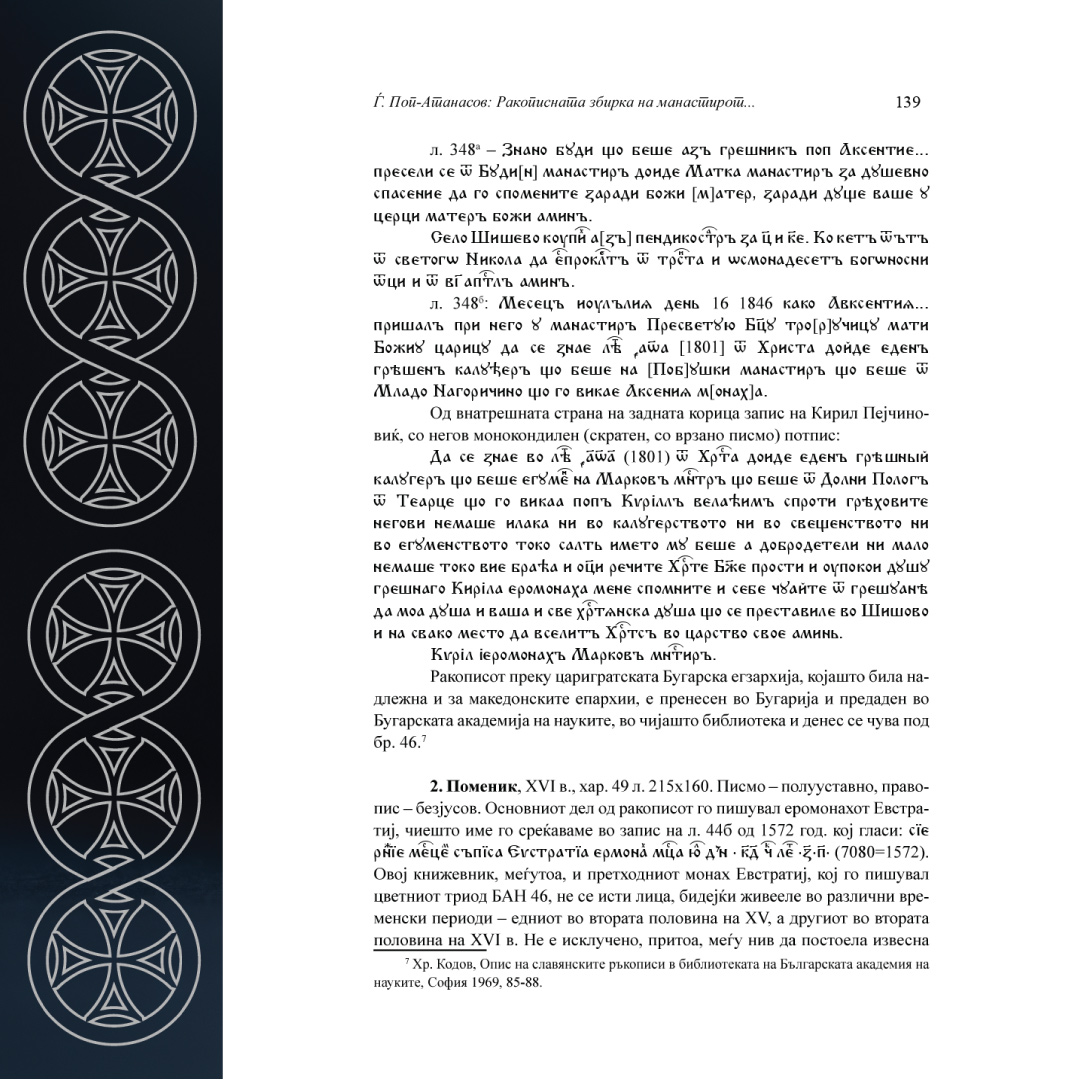
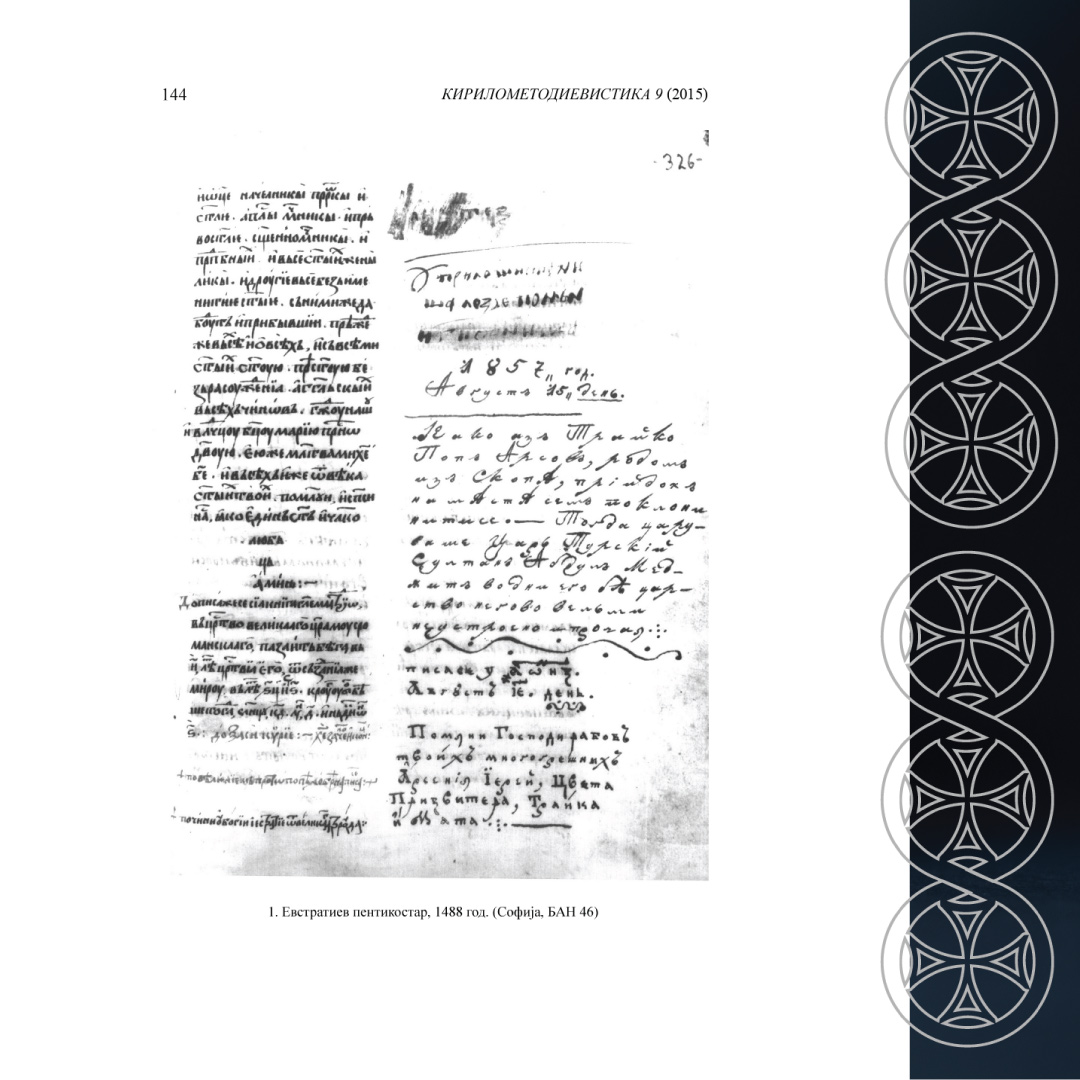
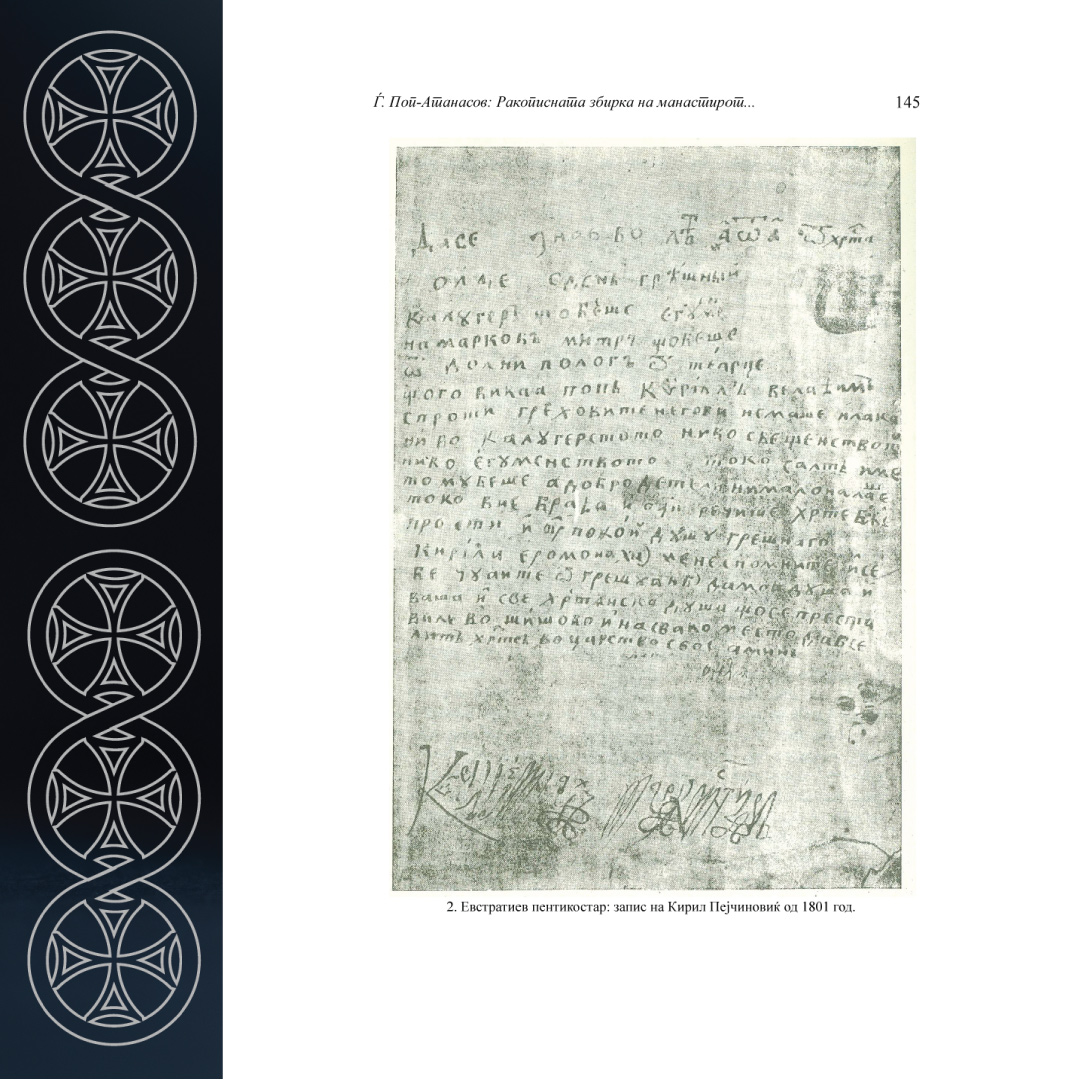
PENTACOSTARION - PASHAL (lit. FLORAL) TRIODION
The manuscript is from 1488g, paper 350l, 295×205 mm. Written by two writers, the second of whom is known – the monk Eustratius.
Well preserved, the Triodion contains church services for the period from Lazarus Saturday to the Sunday of All Saints, synaxaric readings for Sundays and holidays, troparion …
There is an inscription on the Pentacostarion by the monk Auxentius in 1846, in which he himself wrote that he originated from Staro Nagoricane, and in 1801 he came to the monastery of Matka, which he calls the Most Holy Theotokos Troerucica (of Three hands).
On the inside of the back cover is the inscription of Fr. Kiril Pejchinovik, In 1801, abbot of the Mark’s monastery, with his signature.
To be known that in the summer of 1801 from Christ, came a sinful kaloyeros (monk), who was abbot of the Markov Monastery, who was from Dolni Polog from Tearce, who was called priest Kiril, I say that despite his sins he had no part in either the monasticism or the abbotness, but only by his name he was, and there were no virtues at all, but you brothers and fathers say – Christ God forgive and rest the soul of the sinful Kiril the hieromonk, remember me and protect yourself from sin, so that my soul, and yours, and all the Christian souls who presented themselves( before God) in Shishevo and everywhere, to be inhabited by Christ himself in his kingdom, amen.
„Кiril Pejchinovik is one of the most prominent Macedonian church figures at the time of the revival. He was born around 1770/71 in the Tetovo village of Tearce; studies in the neighboring village of Leshok and in the Bigorski monastery “St. John the Baptist ” from the prominent church educator Joakim Krчоovski.
He started his monastic life in the Hilandar Monastery and the Kichevo Monastery “Introduction to the Theotokos – The Most Pure”.
From 1801 to 1818 he was abbot of Marko’s Monastery “St. Dimitrij “; in 1818 he returned to his homeland, renovated the Leshok monastery “St. Athanasius ”and remained in it until the end of his life (March 12, 1845).
During his abbotship in these Macedonian monasteries, Pejcinovic managed to establish rich libraries with old Slavic manuscripts and old church books in them. By collecting these books from desolate churches and monasteries, he actually saved the literary and cultural heritage of paramount importance for the history of our country’s church literature and written tradition. In the libraries of Marko’s and Leshok monasteries were found several parchment manuscripts, as well as manuscripts in which are preserved transcripts of literary works of St.Clement of Ohrid and other medieval church writers. “
(… Academician Gjorgji Pop-Atanasov)
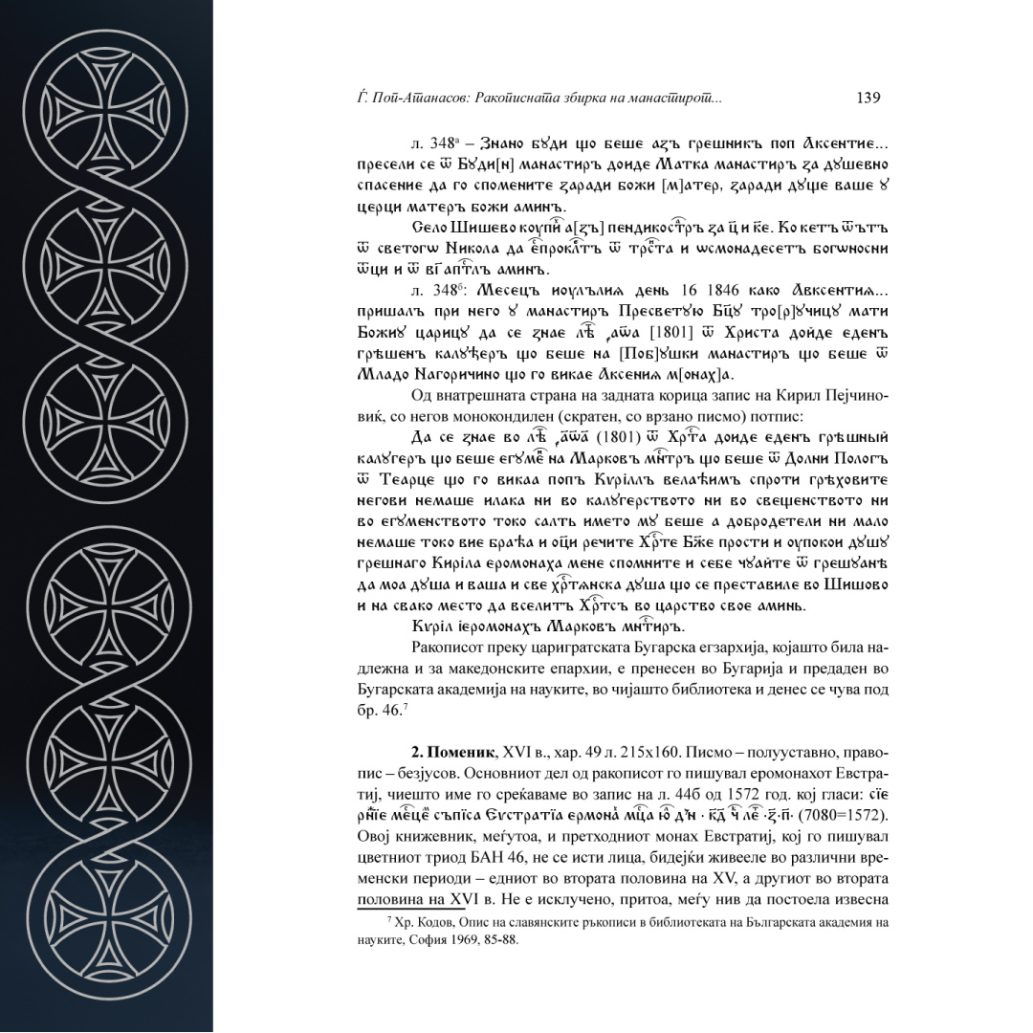
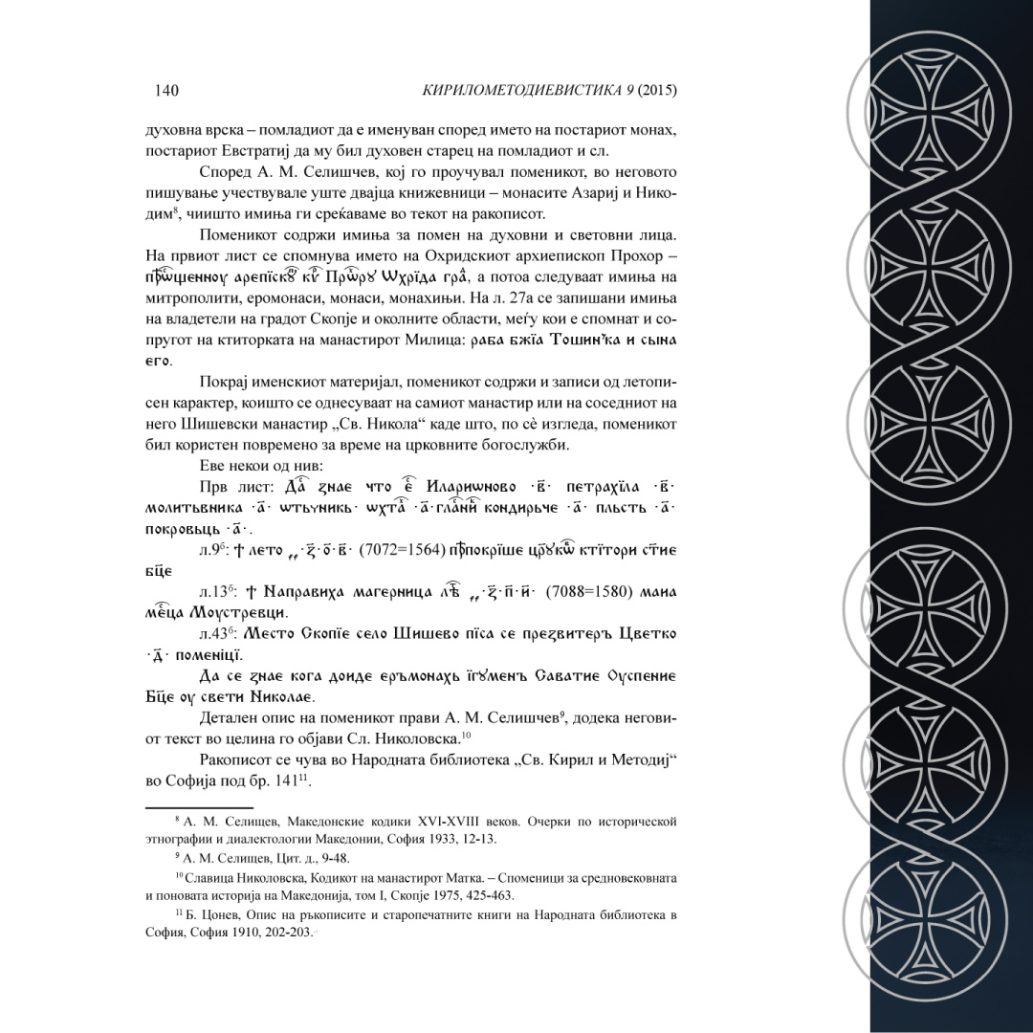
THE CODEX
rom this monastery came the Codex (Prof. Gjorgji Pop-Atanasov, in the processing of the manuscripts calls it – a commemoration list) which is located in the National Library in Sofia. The manuscript for the main part was created in the sixties or the seventies of the 16th century, and in later periods was constantly added to. The Codex contains entries from the 17th and 18th centuries, in which the writing style, language,and content differ from the earlier entries.
True, the Codex carries later dates of entry (1564-1580), but, certainly it is a transcript of an older original which was later added to. Three writers worked on the initial, basic section: Hieromonk Eustrati, monk Nicodem, and Azariah. This, we learn from the records of the manuscript that were left by them, about their work.
The Codex is actually a dedication (a commemoration list), from where these names are mentioned during church services – for good health of the living, and for a place in the kingdom of heaven for the dead. Before the names the dedication section, is written that it should be read during the liturgical service, every Saturday. This confirms that there were regular worship services in addition to the Sunday services, when by tradition in the monastery of Matka, all the ascetics of the caves and hermits would gather for a Liturgy.
The manuscript also contains many entries relating to the gifts and contributions of the pilgrims to the monastery.
The Codex was written in continuity. One entry in the manuscript testify that it was transferred to Shishevo monastery when the abbot Hieromonk Savatij, of the monastery Assumption of the Virgin – Matka, crossed to St. Nicholas in Shishevo, which before the fire, in 1897 was borrowed by monk Chariton in the Bigorski monastery, and taken later, from there to Sofia.
The Codex of the Matka Monastery was completely elaborated and published by Slavica Nikolovska in 1975.
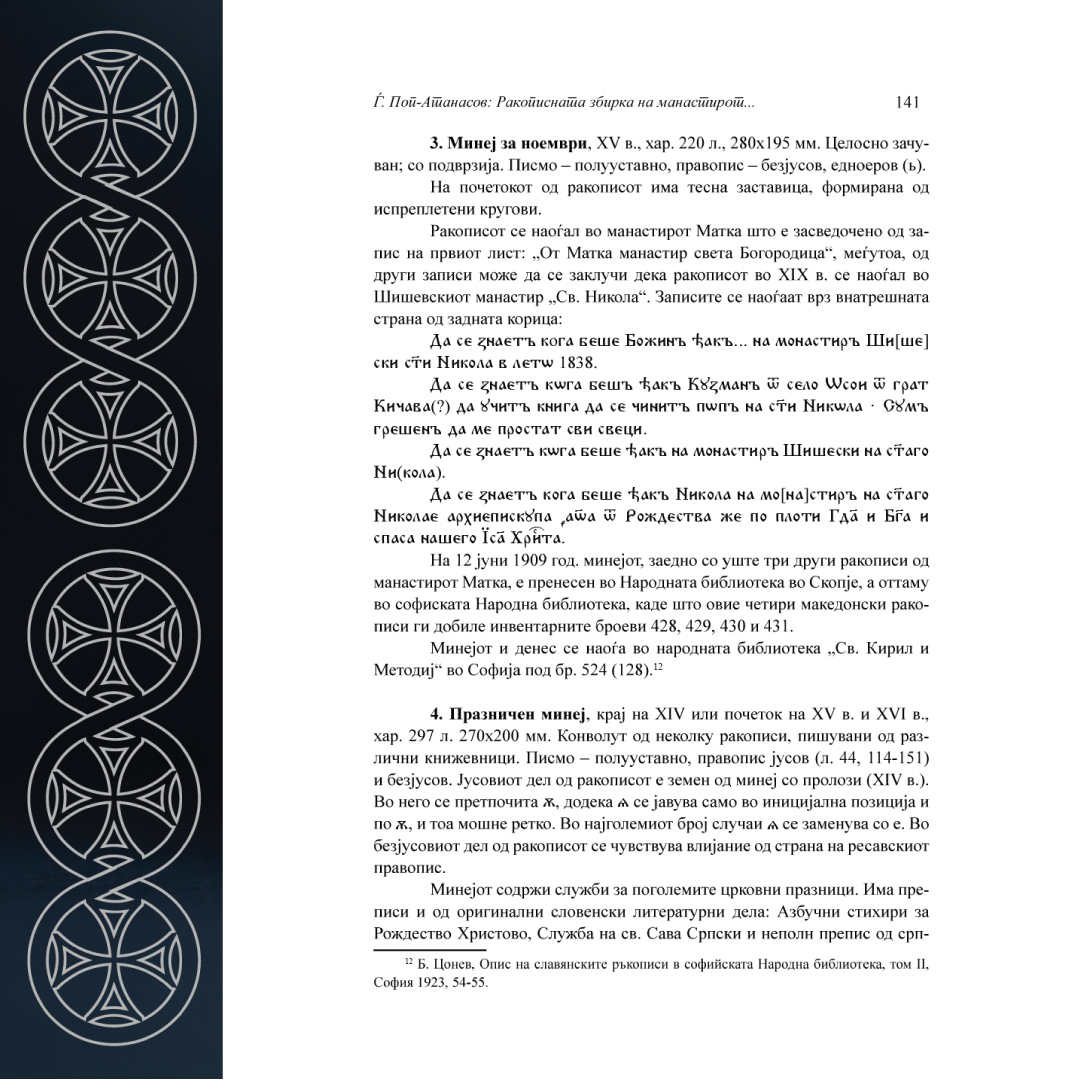
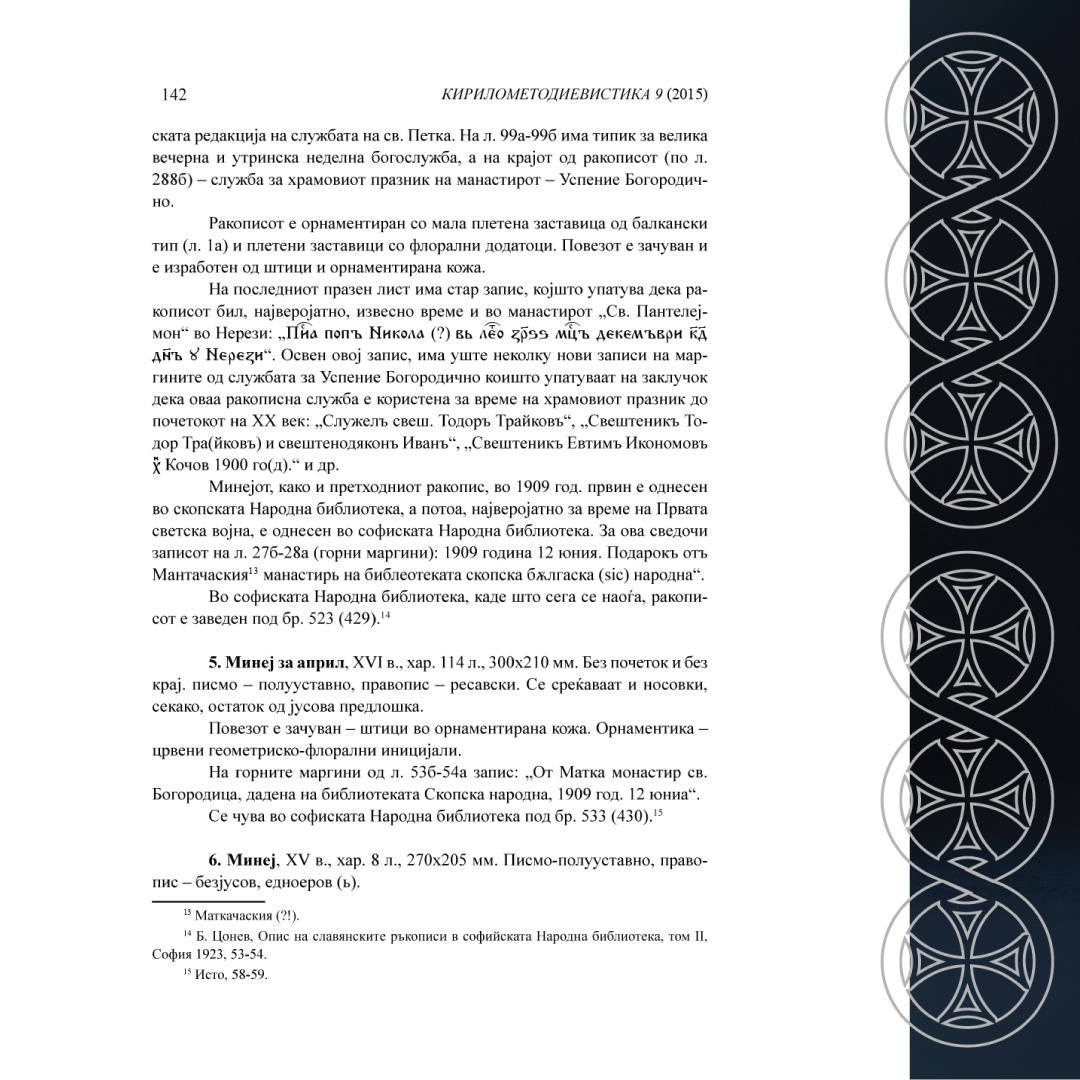
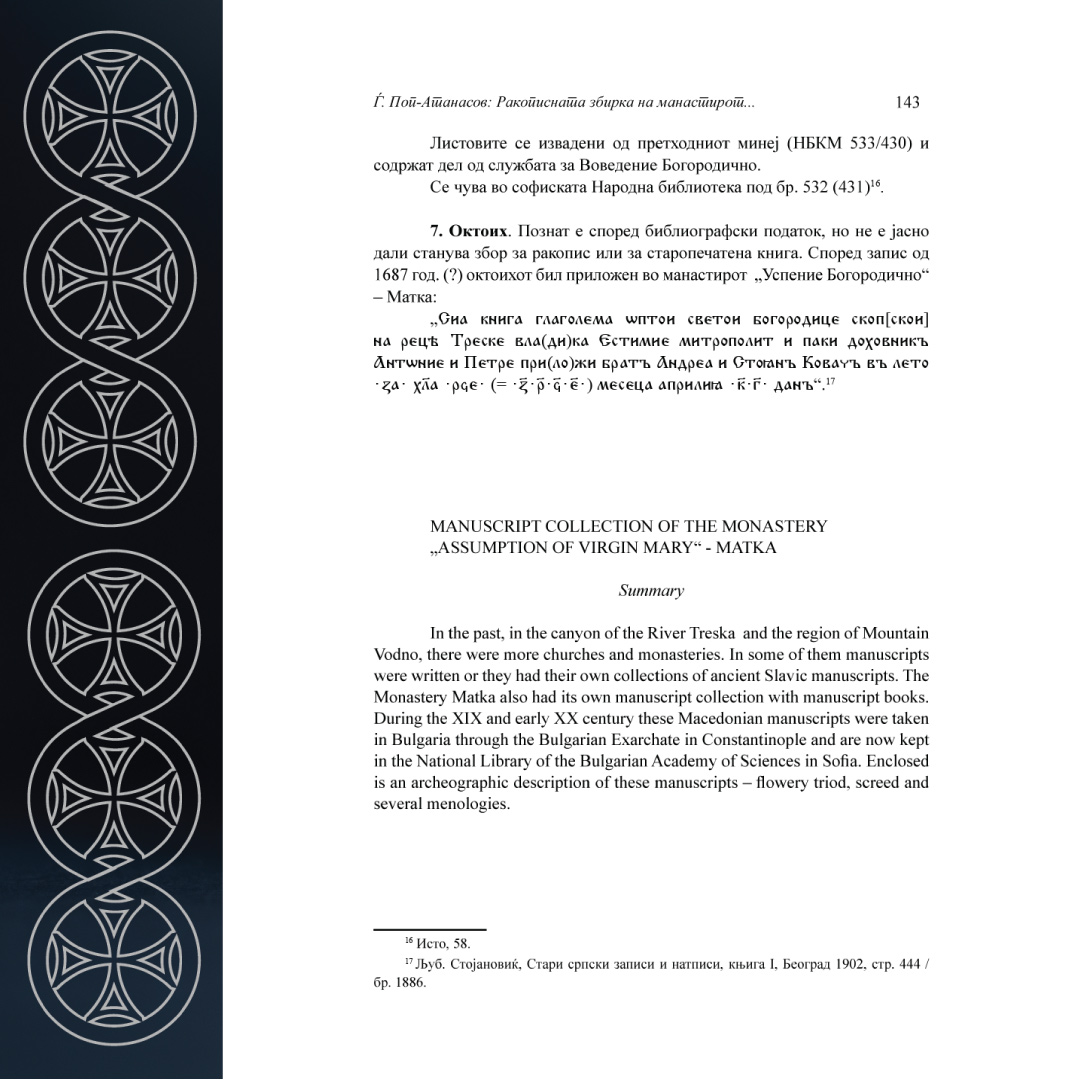
MINEI (MENOLOGY-a biography of the saints commemorated in that month) FOR NOVEMBER
It has been preserved in its entirety, 220 l, 280×195 mm. There are later records that he was also in the Shishevo monastery – St. Nicholas. However, on its first page it is clearly written – “From Matka Monastery of the Holy Theotokos”.
On June 12, 1909. together with 3 other manuscripts from the Matka Monastery, it was transferred to the National Library in Skopje, and from there to the Sofia National Library, where it is still located today under No. 524 (128).
MINEI FOR APRIL
It originates from the XVI century, har. 114 l., 300×210 mm. With preserved binding and ornamentation – red geometric floral initials.
There is a manuscript inscribed on it which states: “From Matka Monastery of the Holy Theotokos, given to the Skopje National Library, 1909. June 12. “
The service of the Introduction of the Most Holy Theotokos, which is part of it, is binde (tied) separately.
On June 12, 1909. Both manuscripts from the Matka Monastery were transferred to the National Library in Skopje, and from there to the Sofia National Library, where they are still found today under No. 533 (430) and 523 (431).
OKTOIH (a book of liturgical hymns for singing in eight parts)
It is known only from a bibliographic record from 1687, without clarifying whether it is a manuscript or an old-printed book.
In the inscription is mentioned that the book, at the time of Bishop Estimij and the spiritual father Antonij, was given as a gift to the monastery of St. Mother Mary, near the river Treska, by the brothers Andrej and Stojan Kovach.
We have no information on where Octoich is today. We only know that he was in the monastery in Krushedol-Frushka Gora for some time.
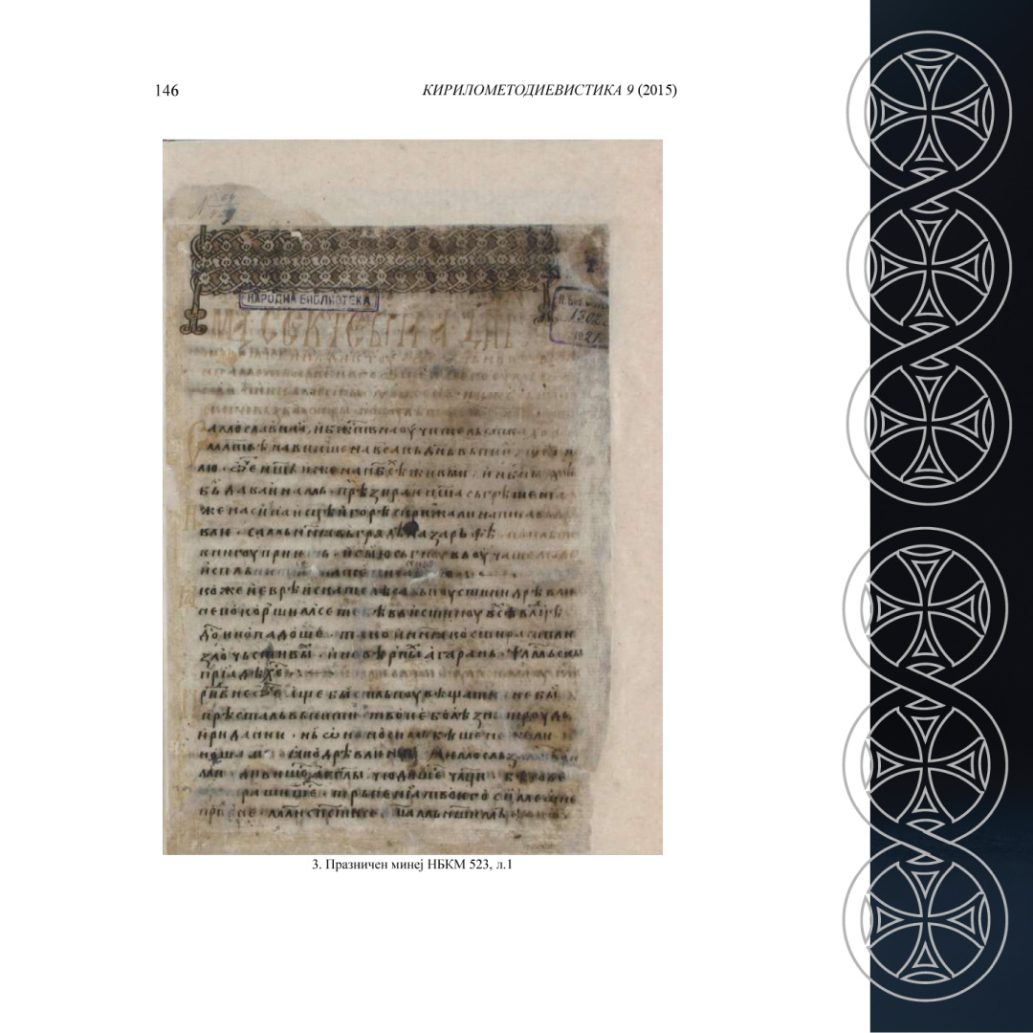
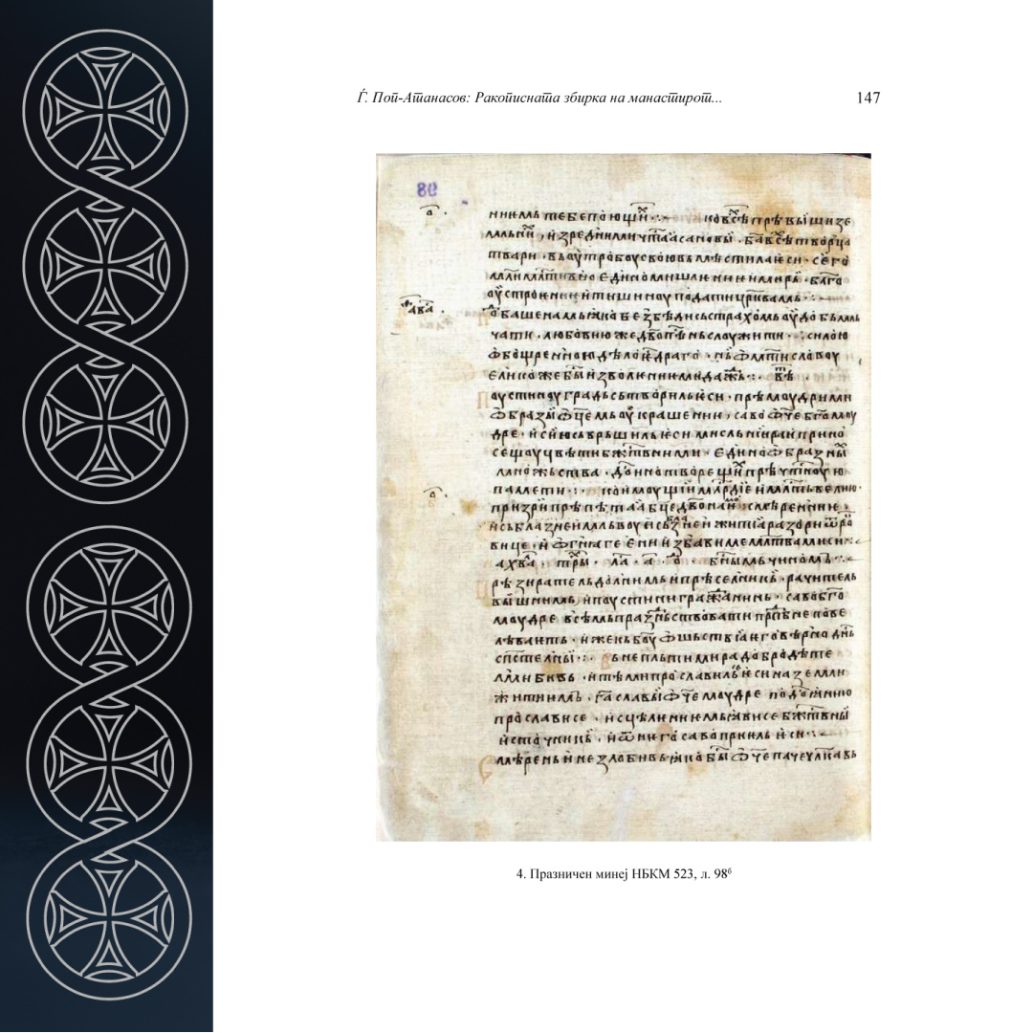
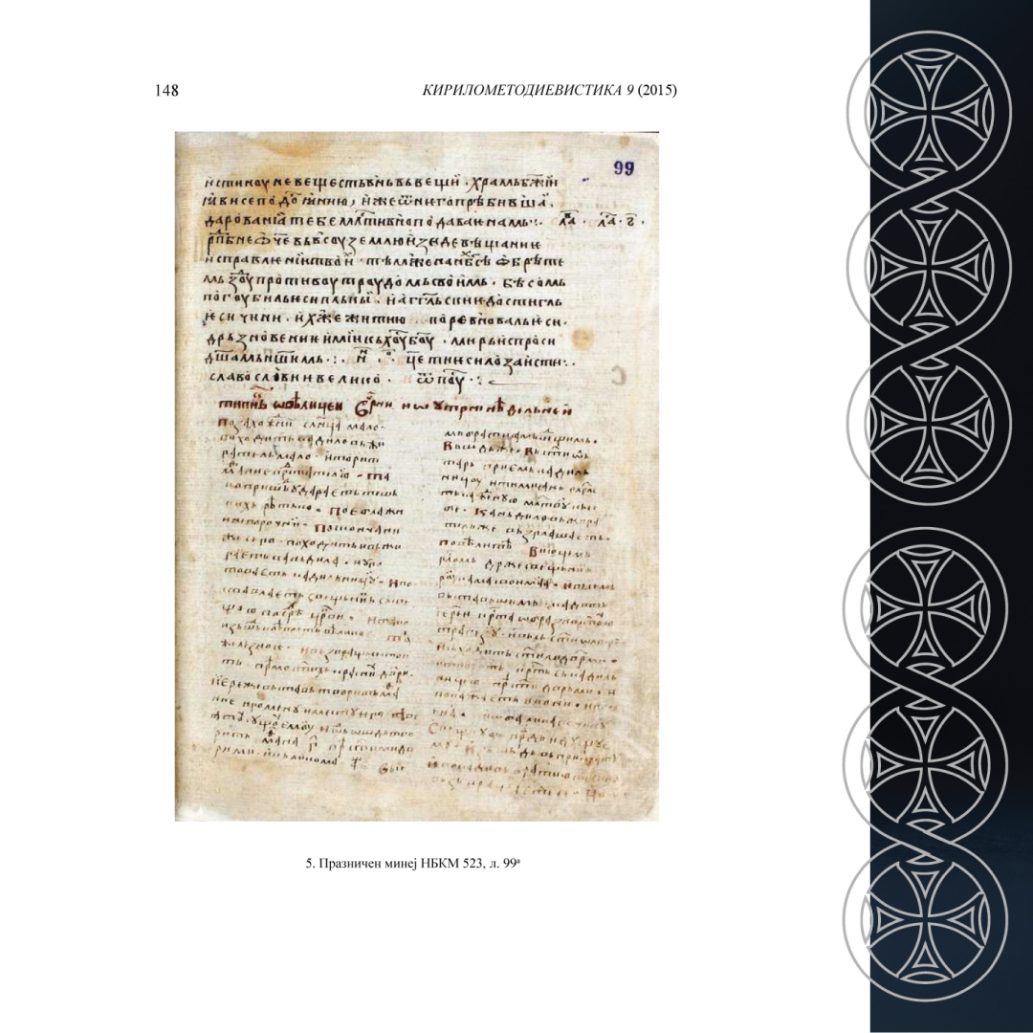
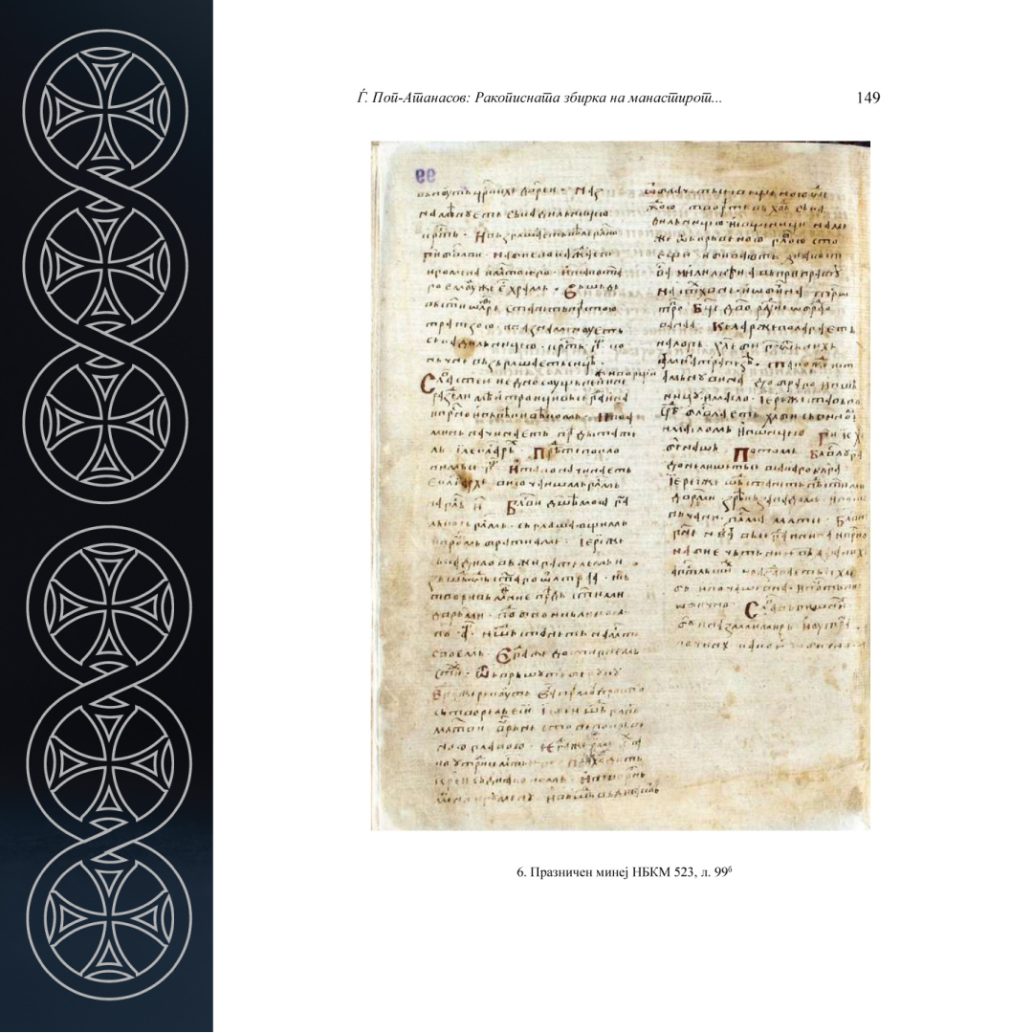
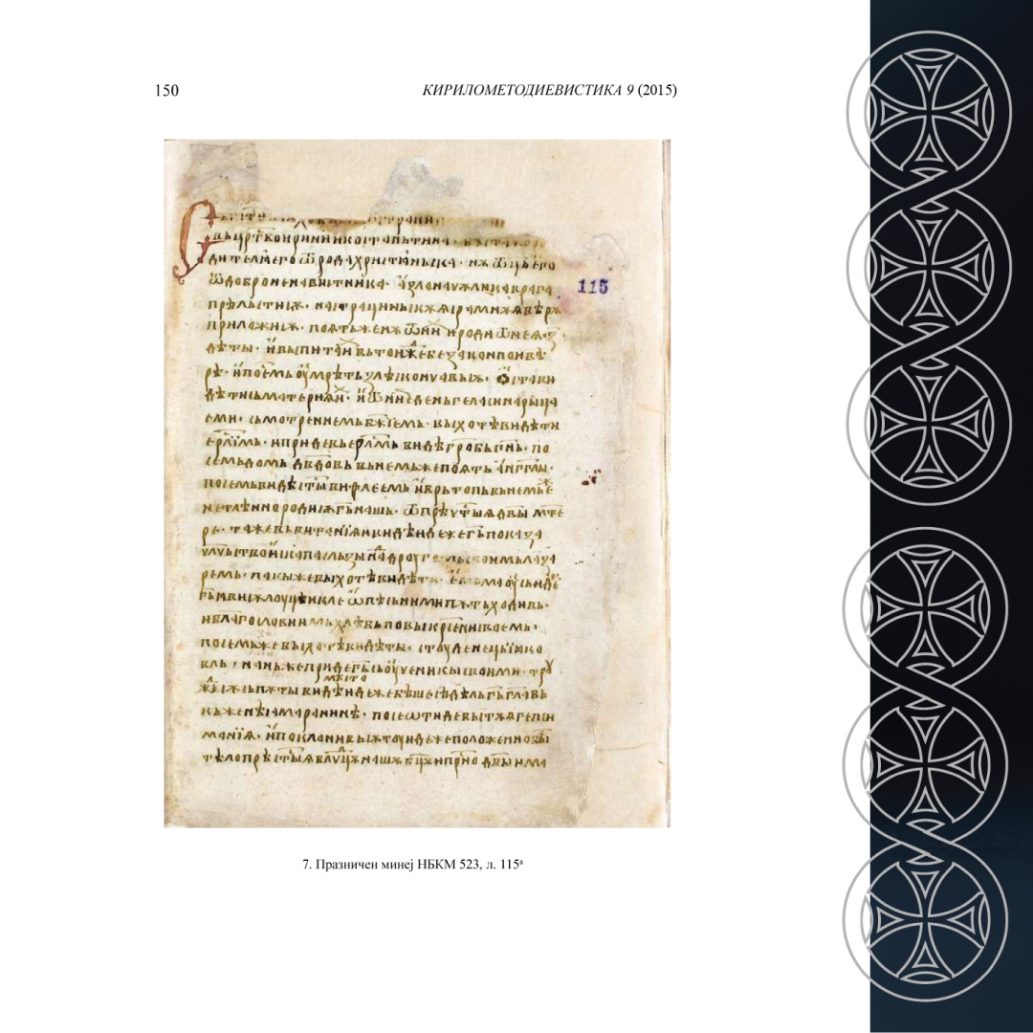
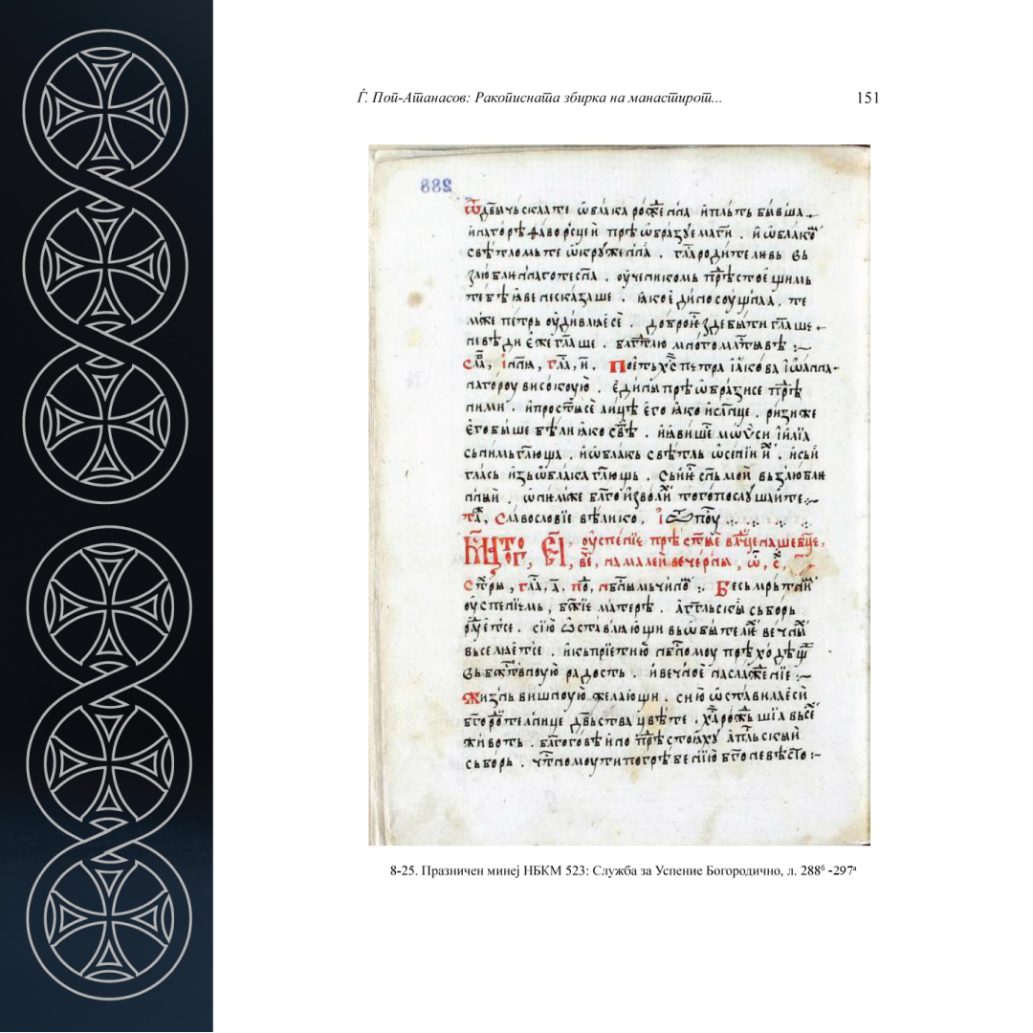
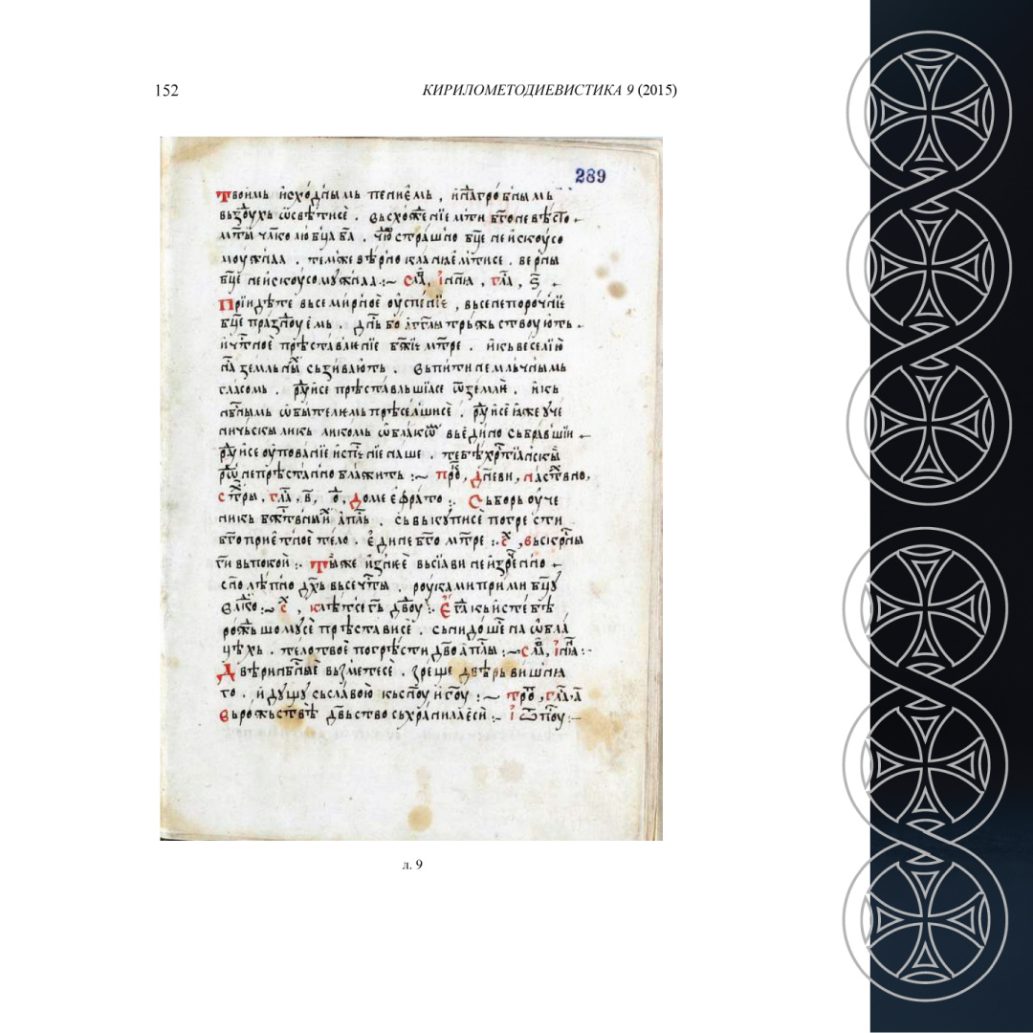
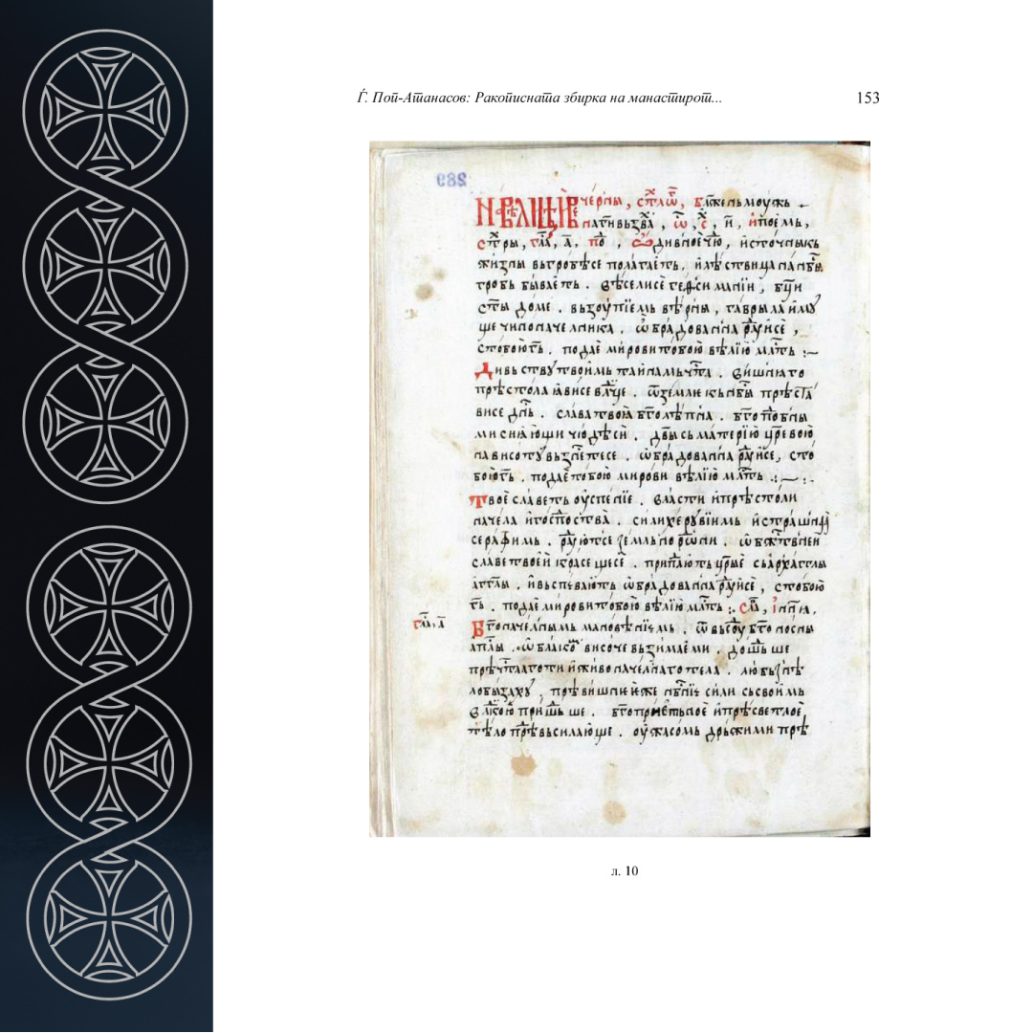
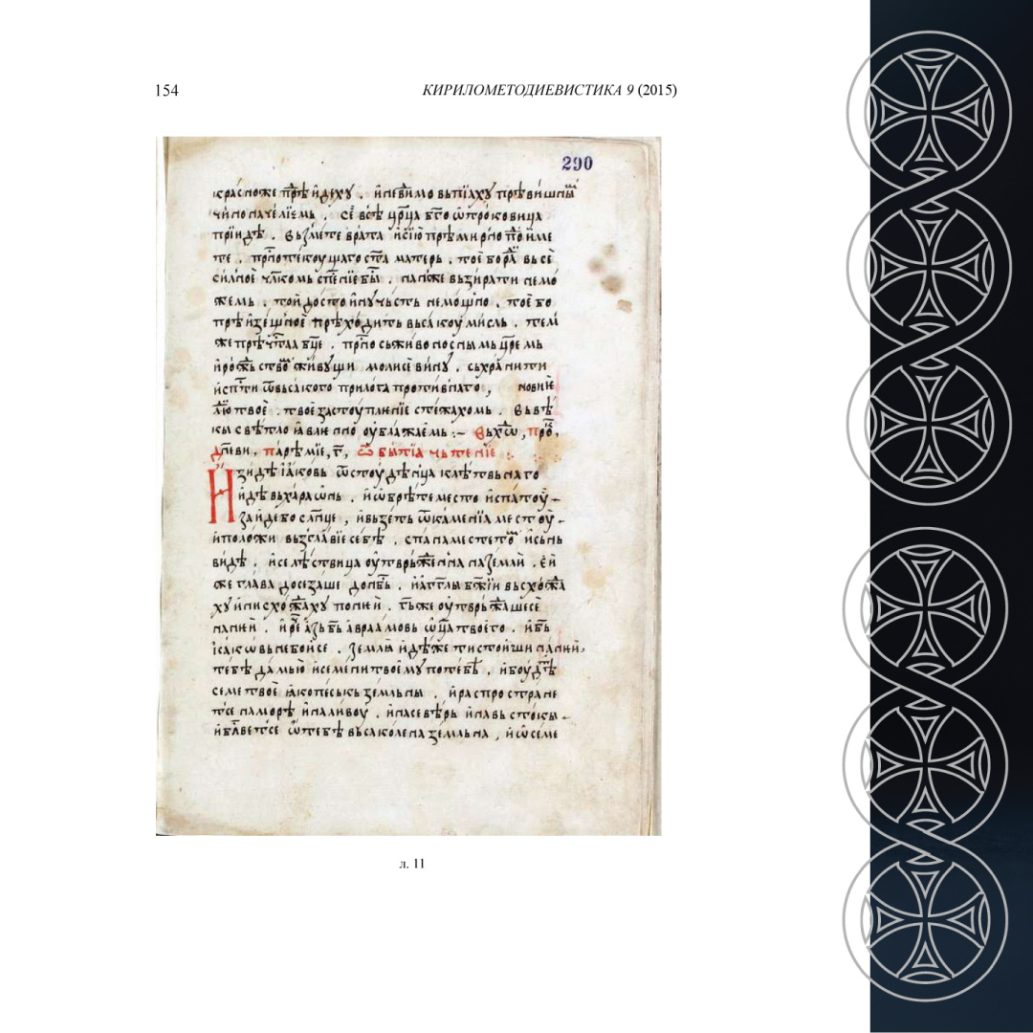
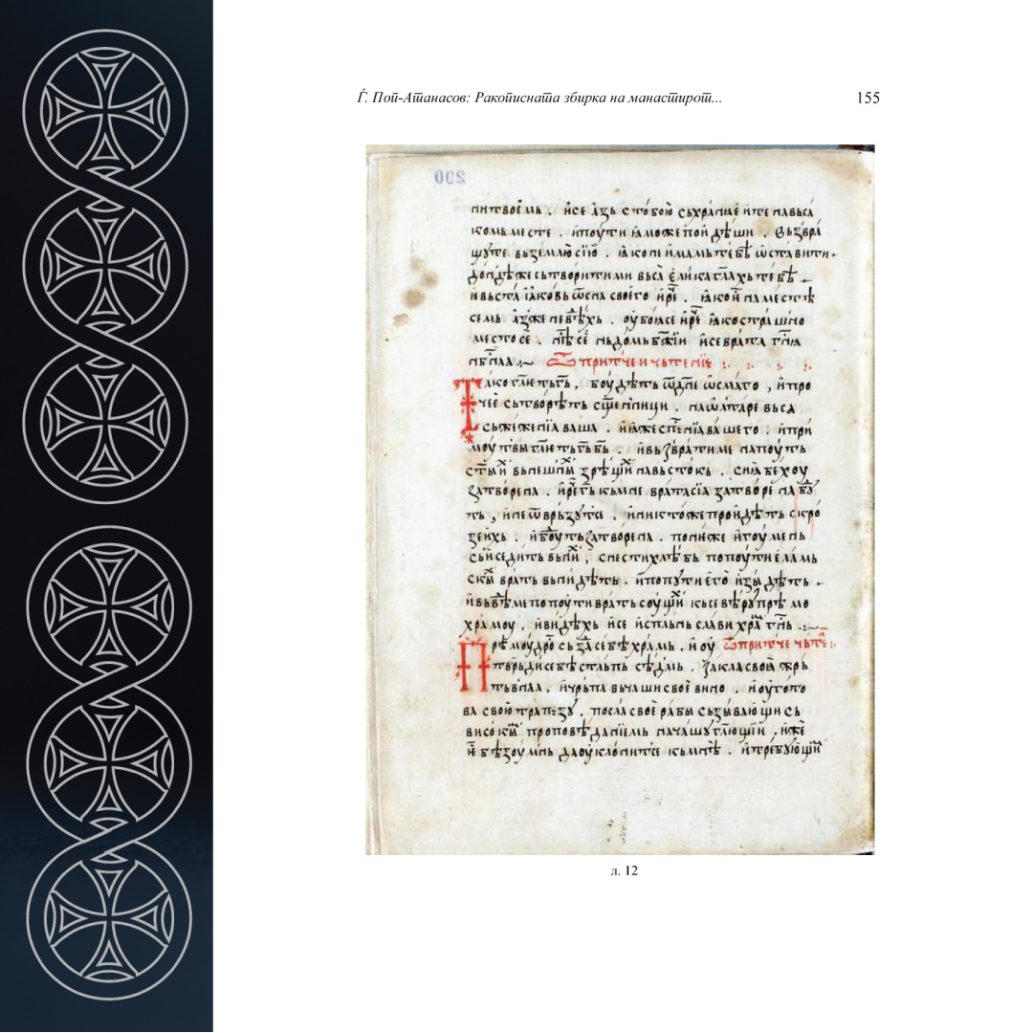
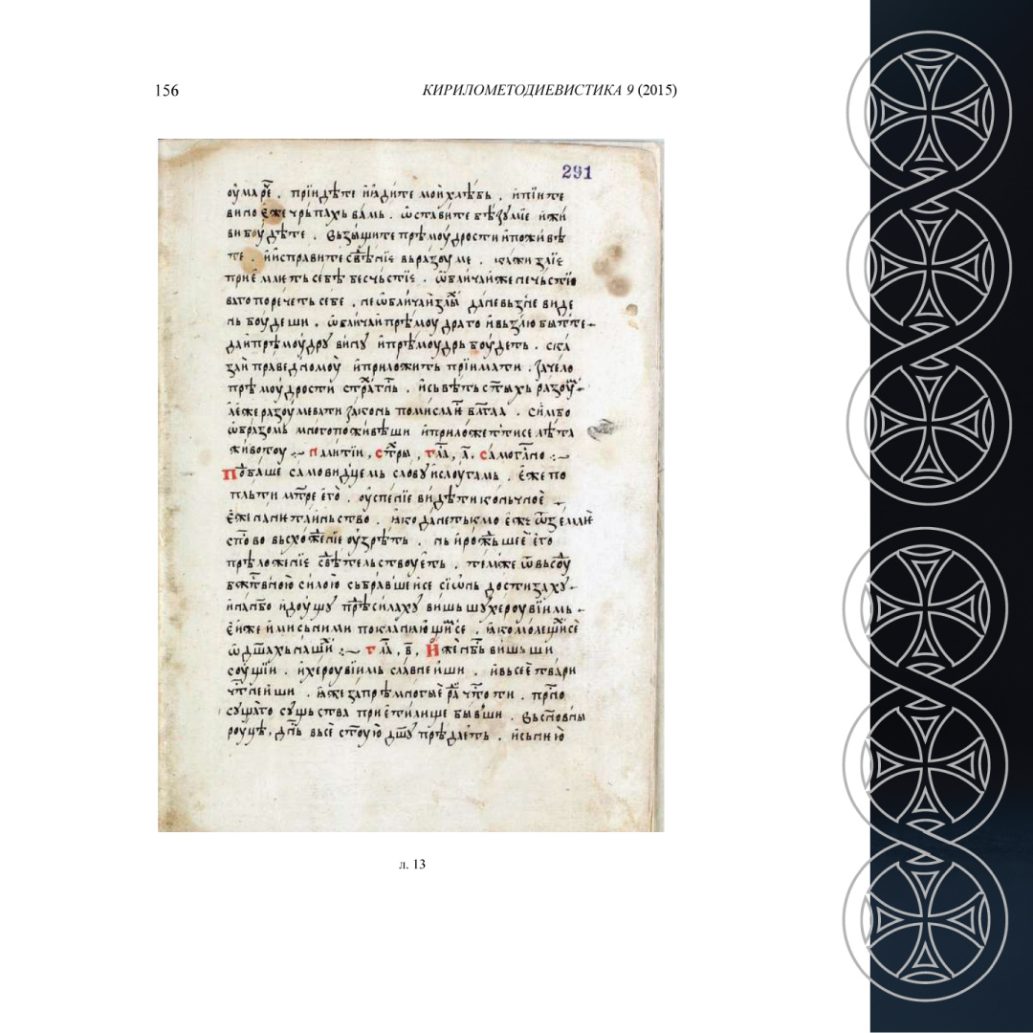
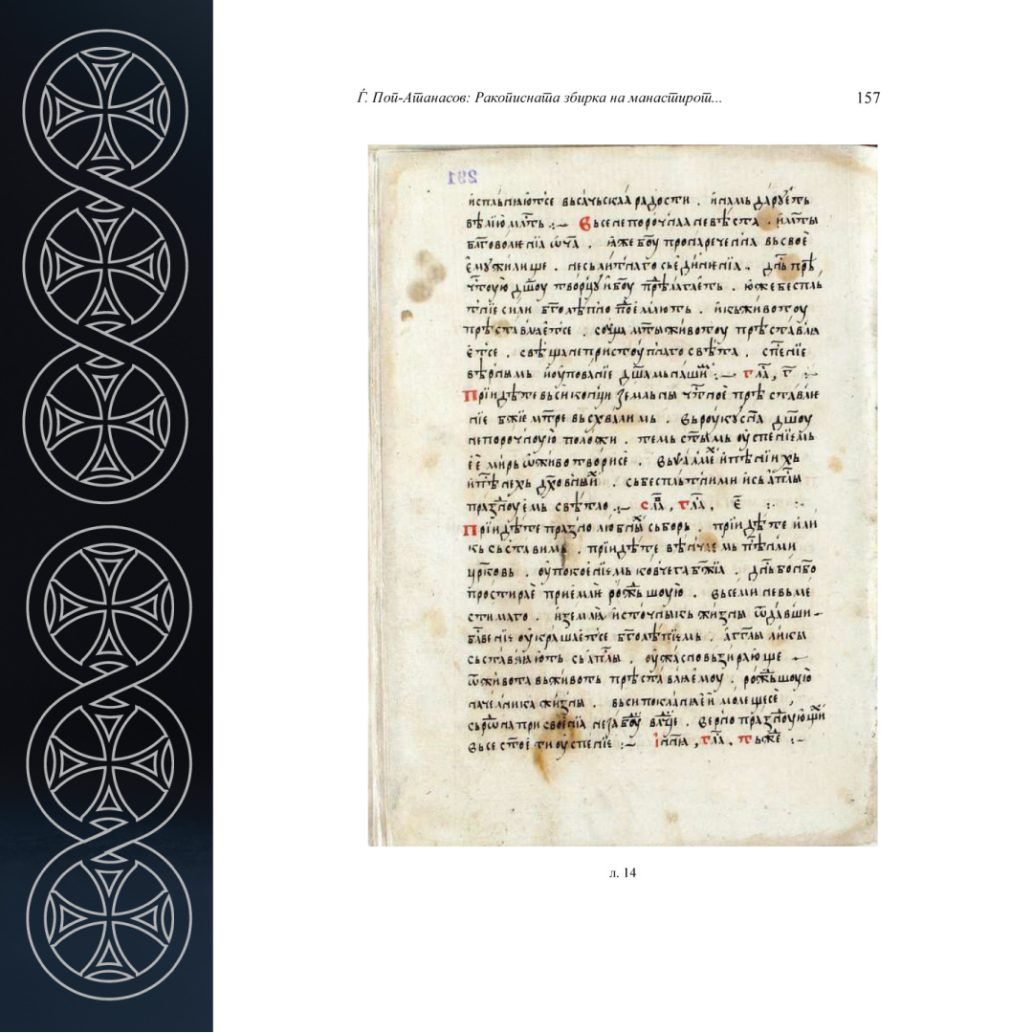
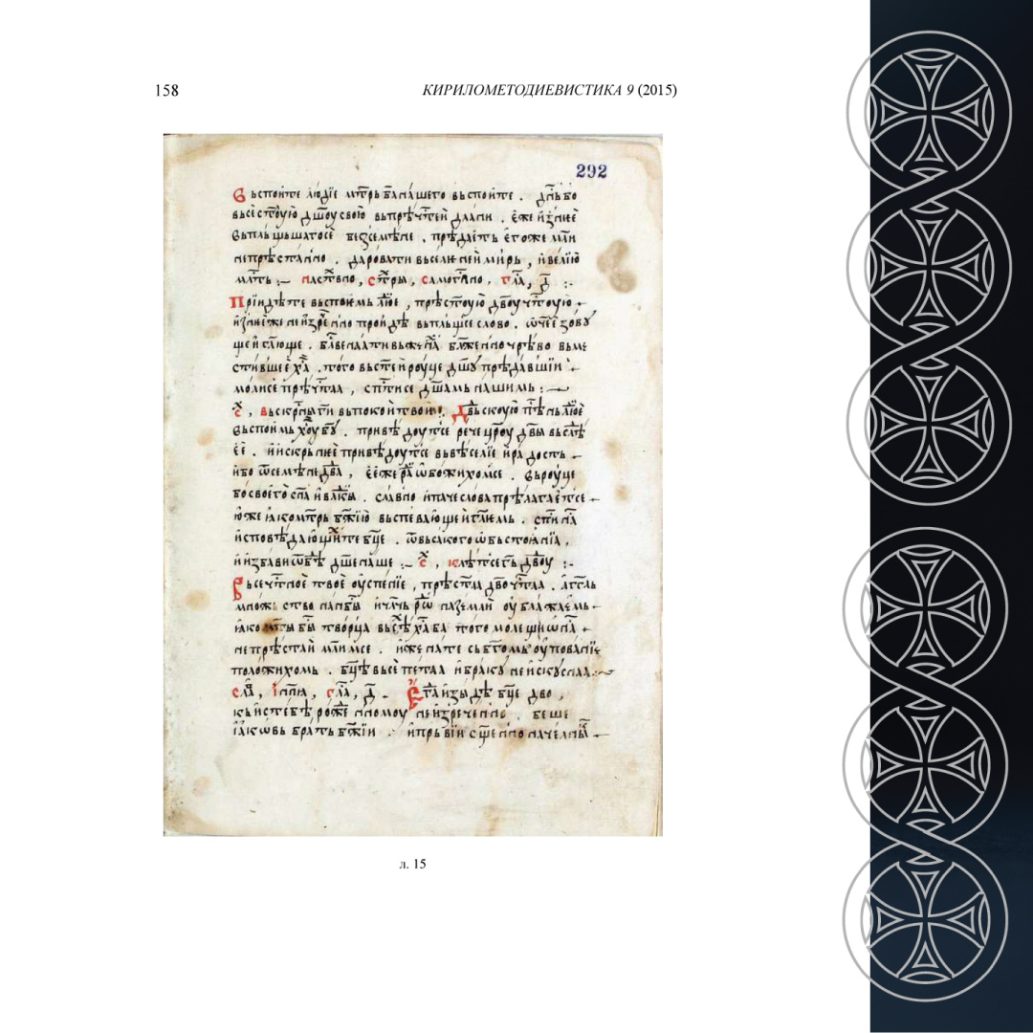
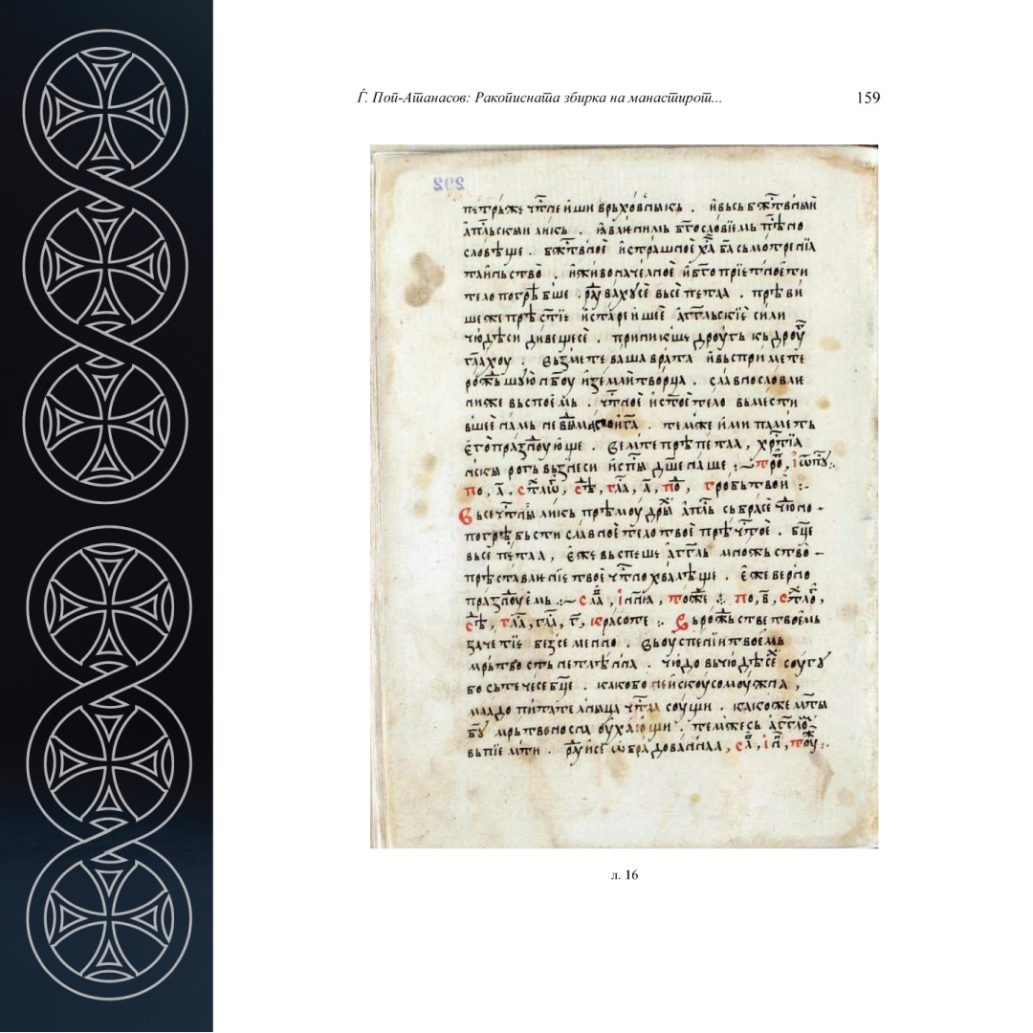
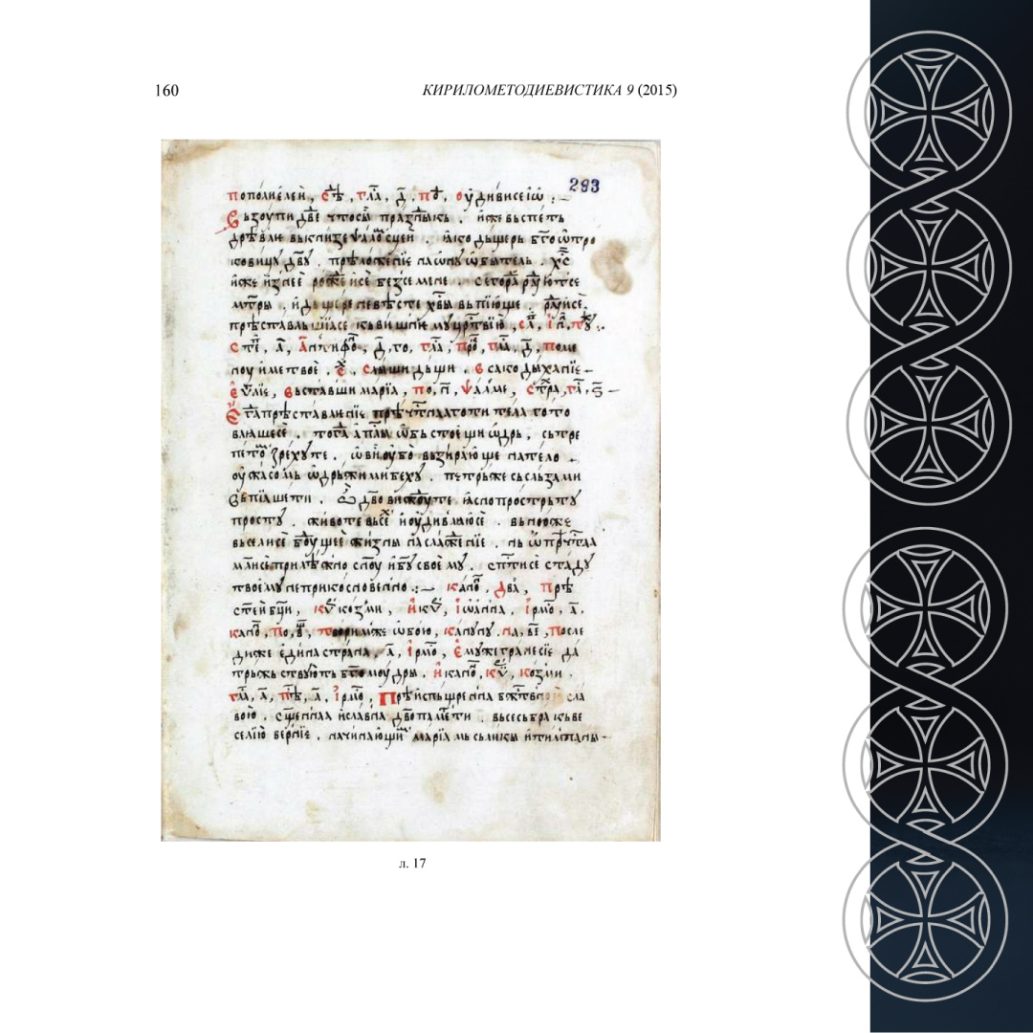
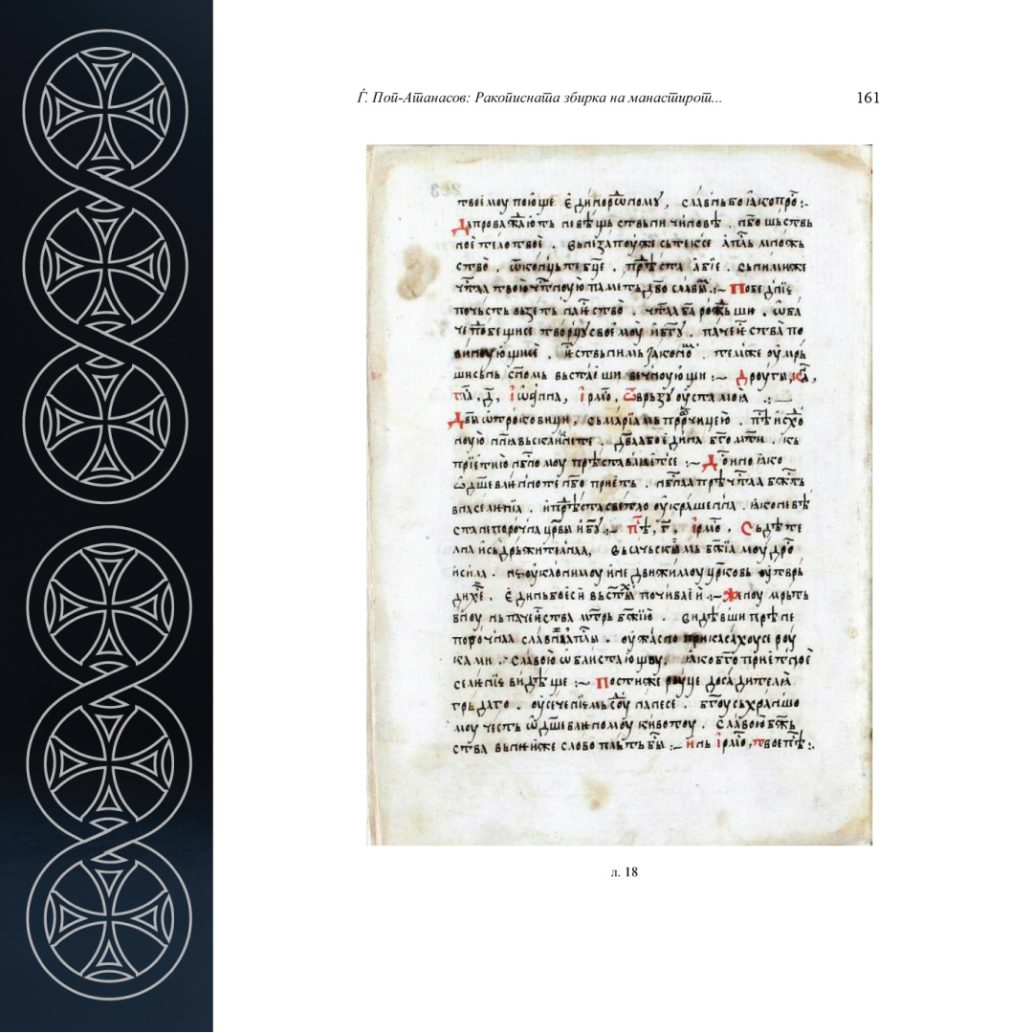
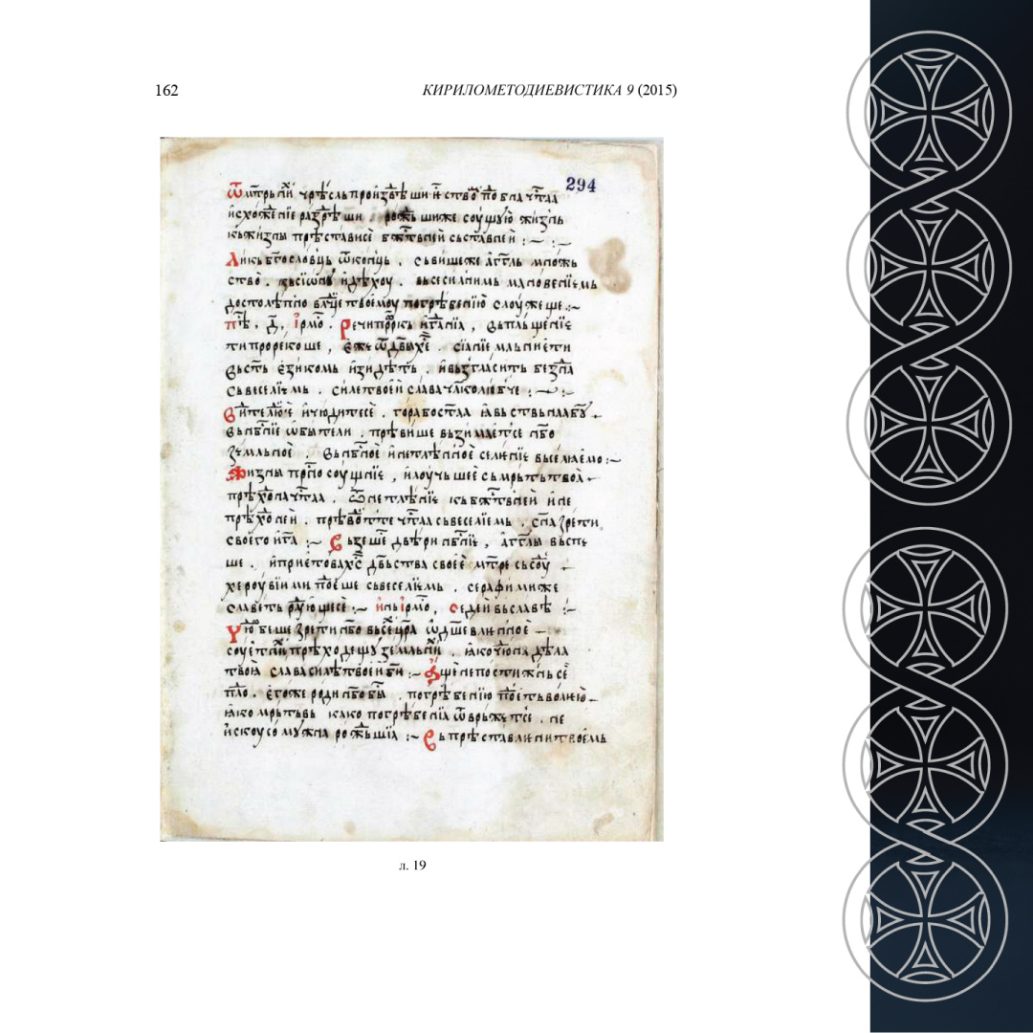
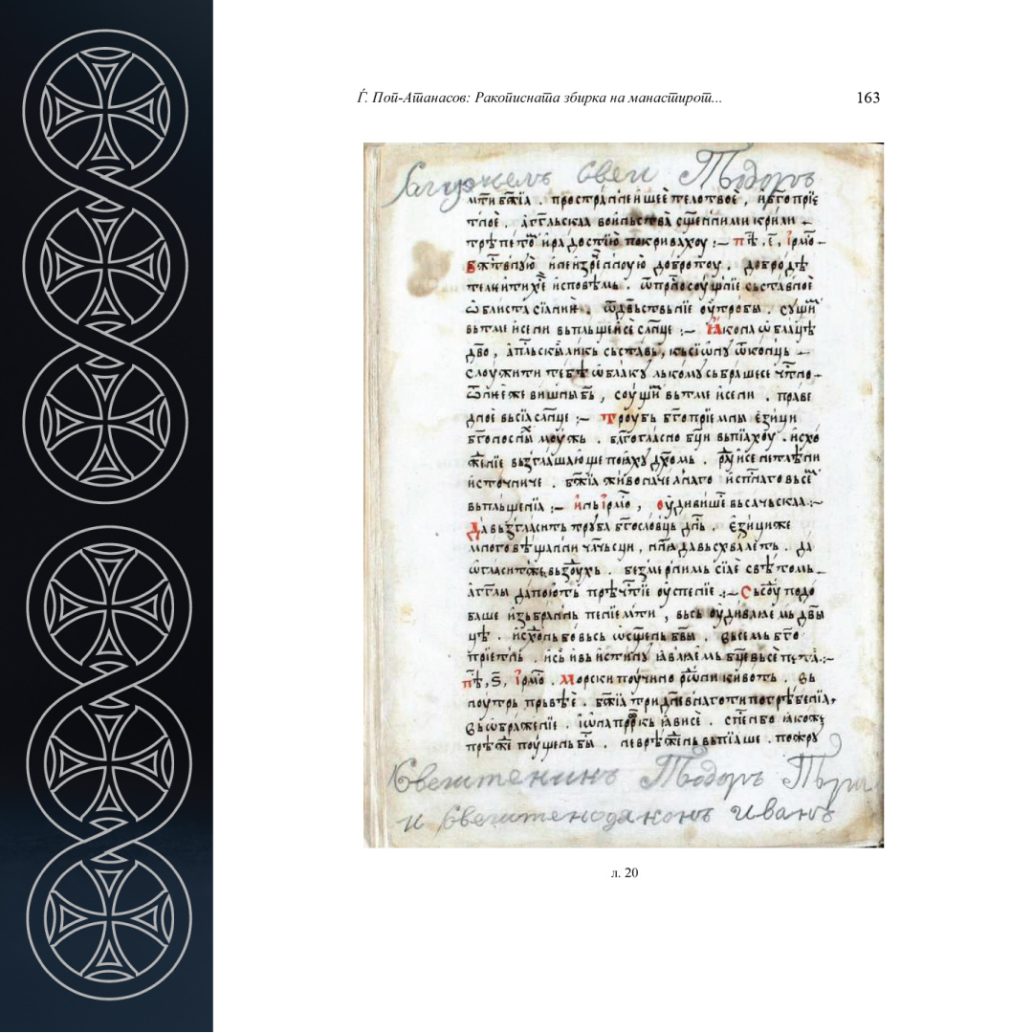
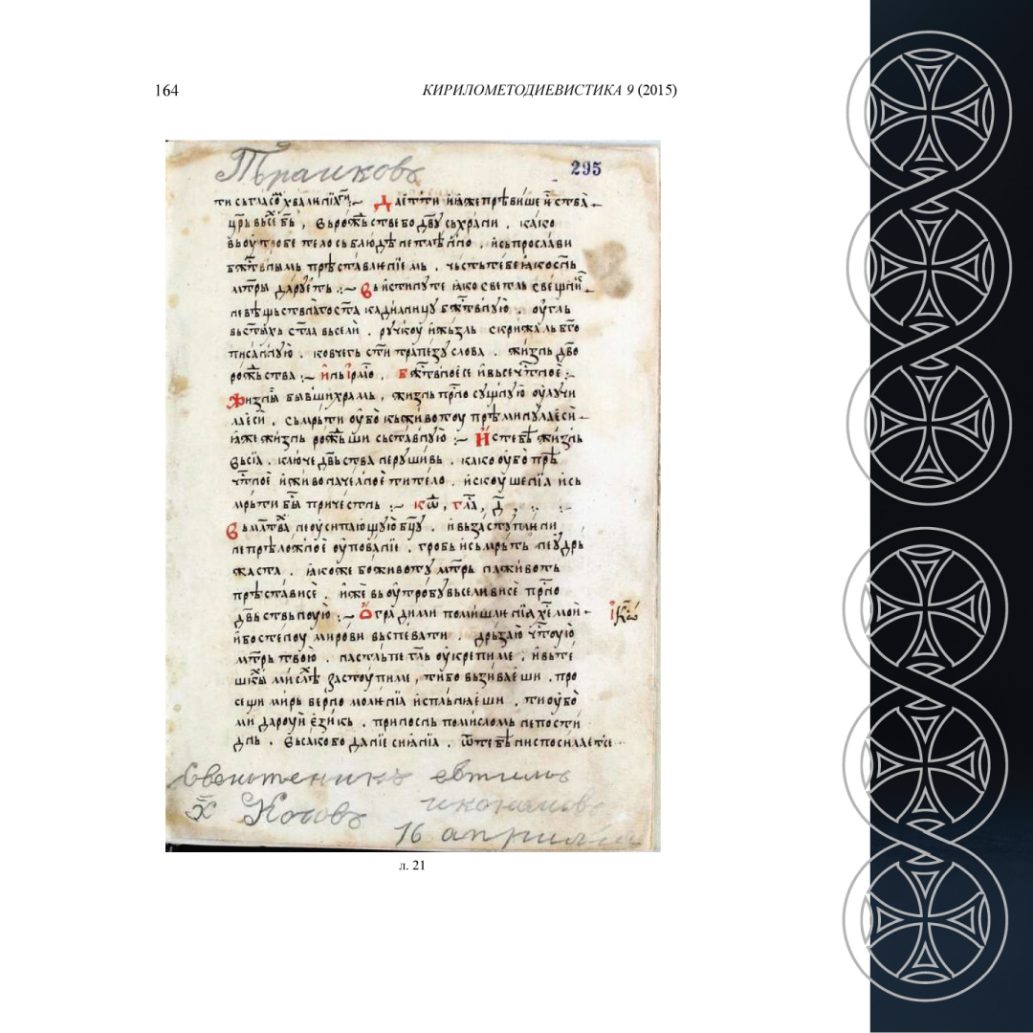
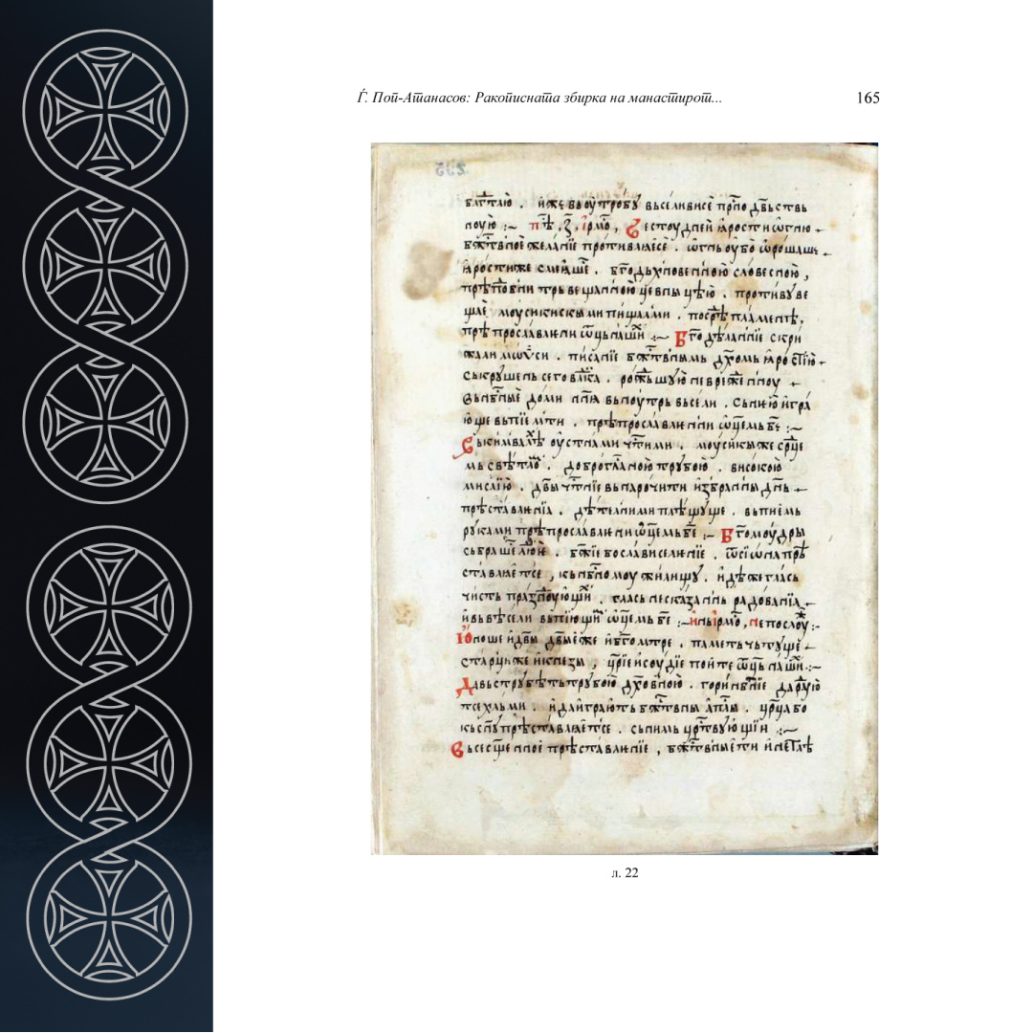
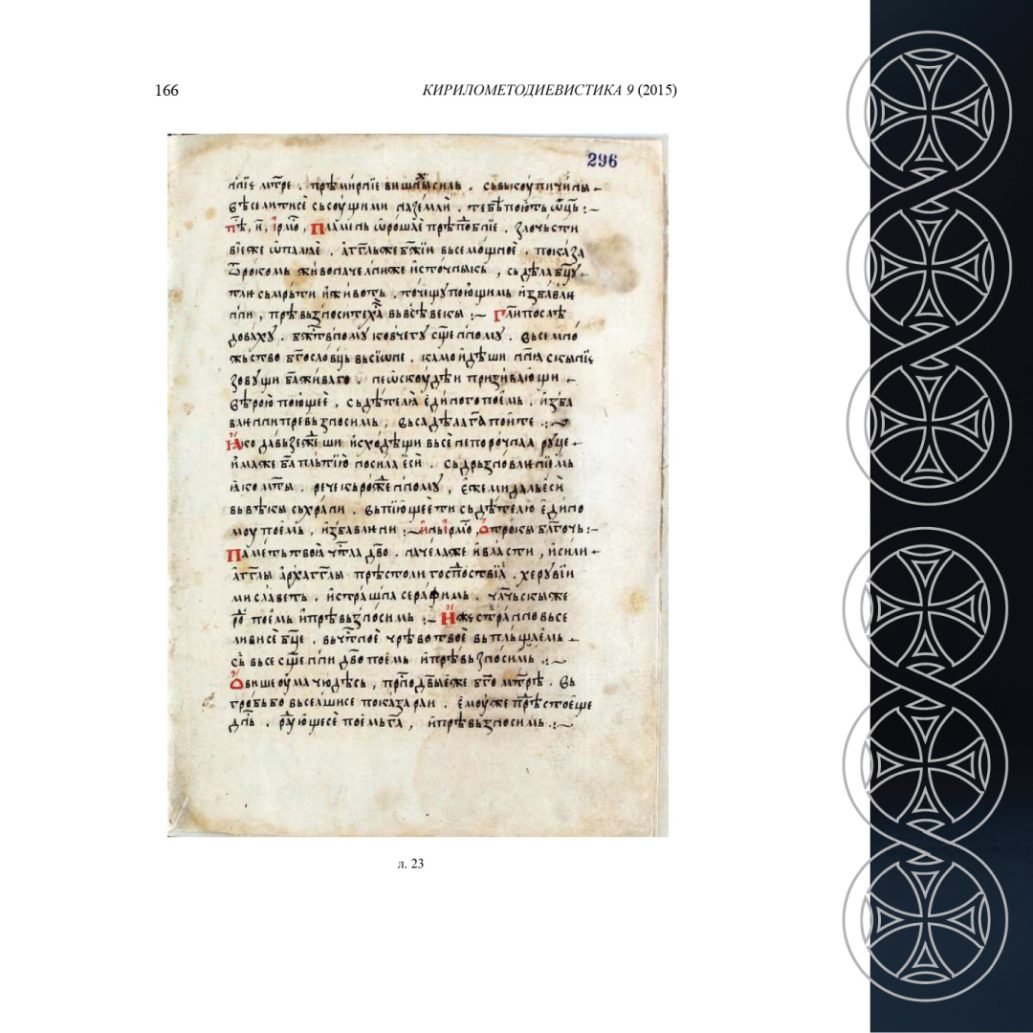
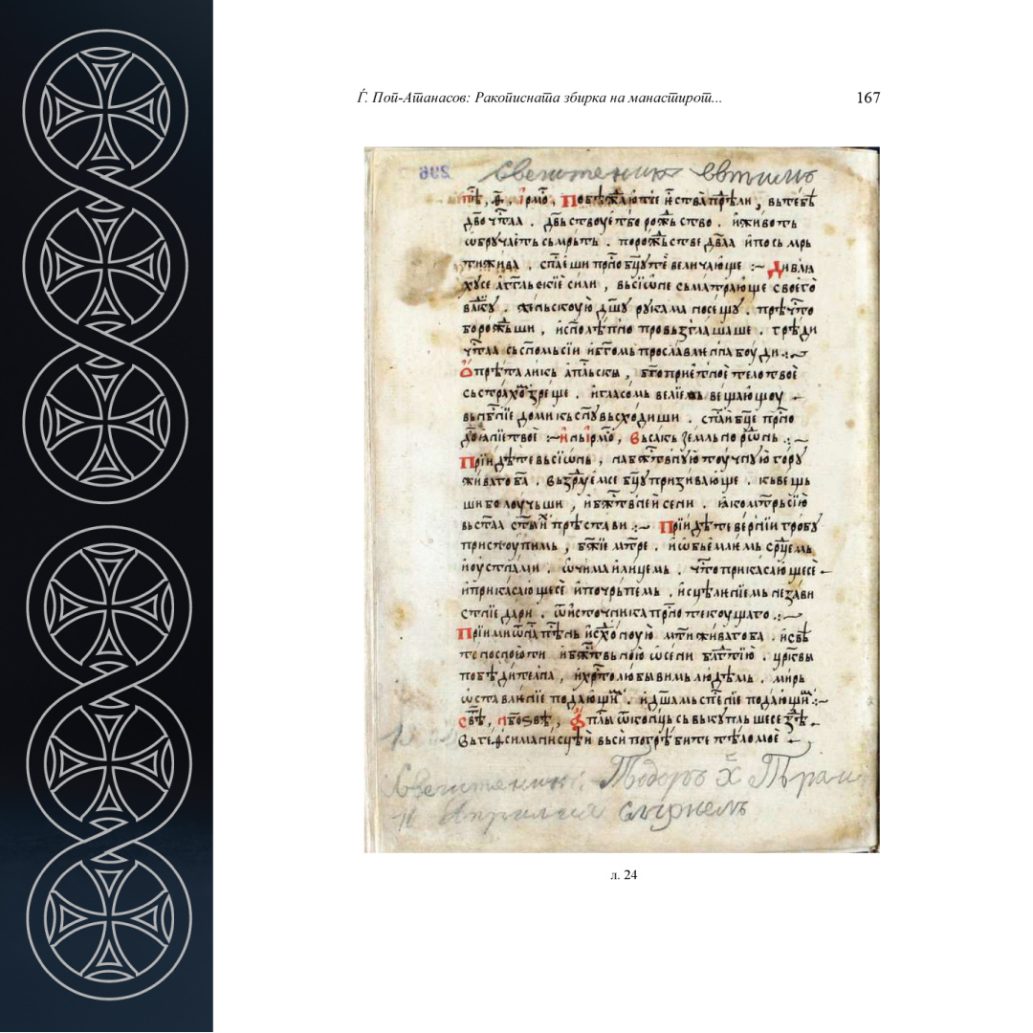
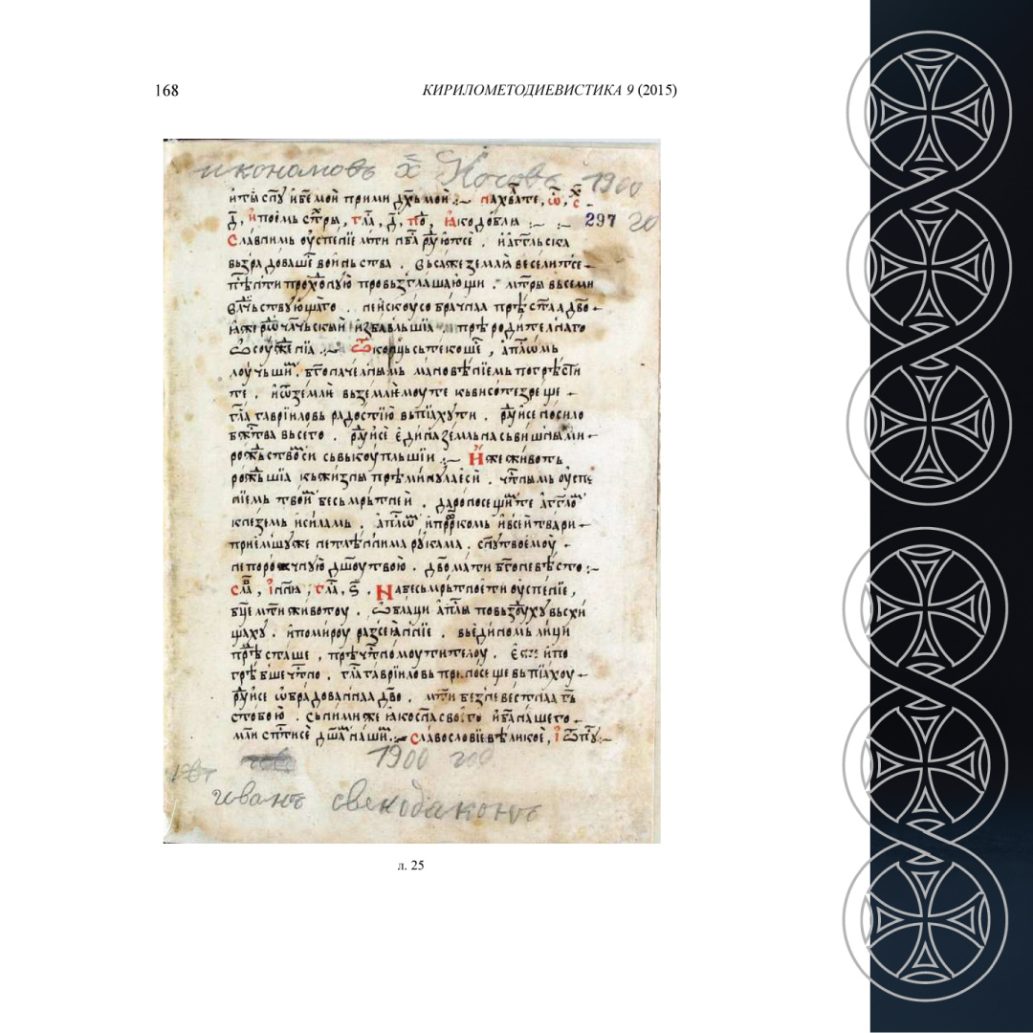
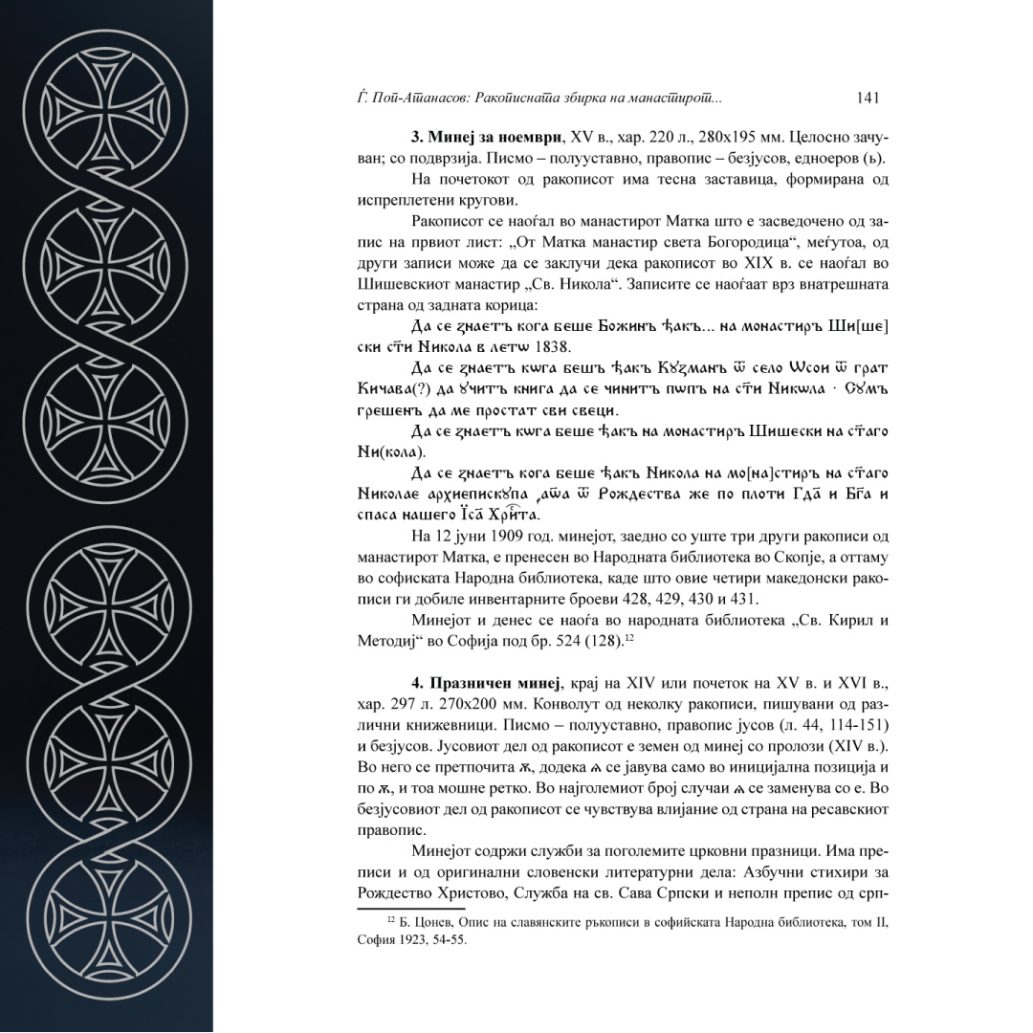
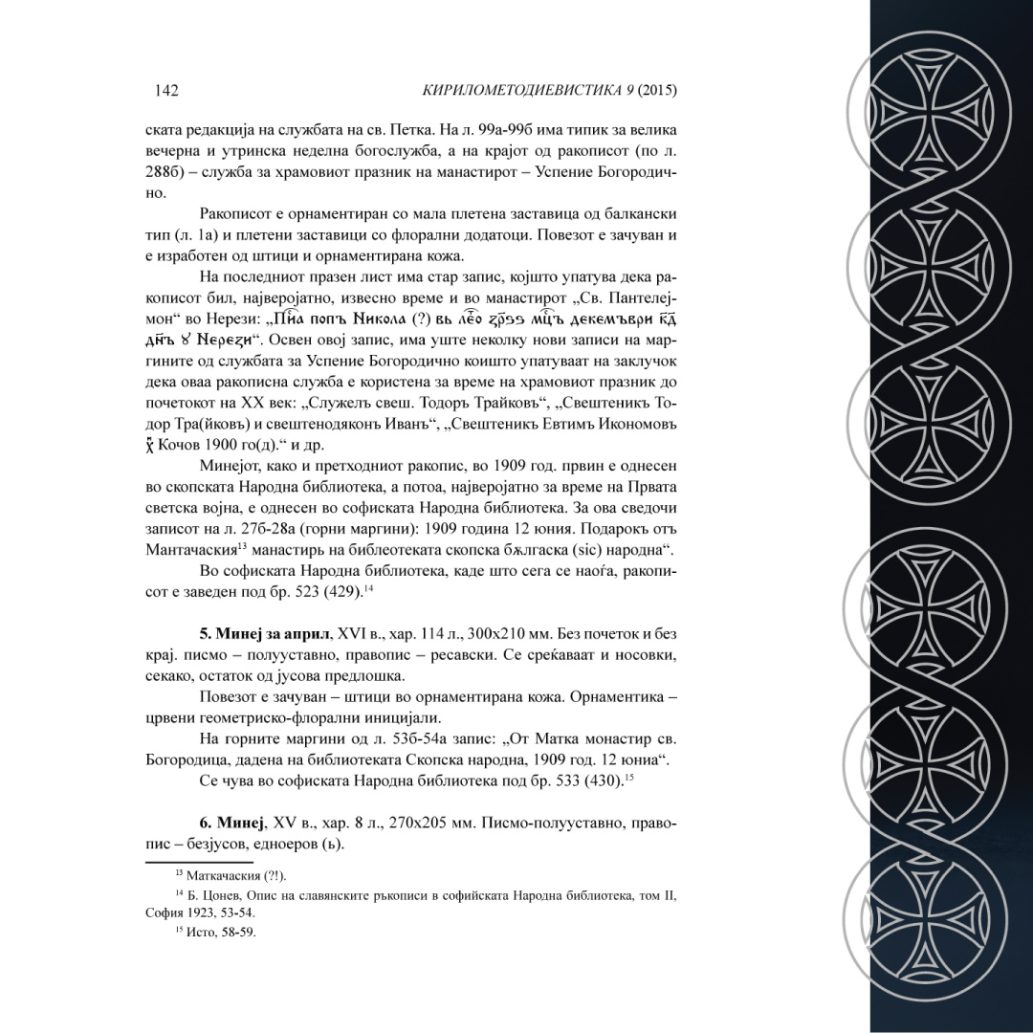
FEASTAL MENOLOGY (MINEI)
It is thought to have originated in the late 14th century (the first records of the feast services are taken from a Minei (Menologies) with prologues from this century) or the beginning of the 15th century. It was complemented by several different writers up to the 16th century.
The manuscript is ornamented. With a preserved binding.
Contains services for major church feasts, including the church holiday of the monastery – the Dormition of the Most Holy Theotokos.
According to records at the end of the service of the Dormition, it was used continuously until the beginning of the XX century.
There is a special general Typikon for the great evening and morning Sunday services.
On June 12, together with 3 other manuscripts from the Matka Monastery, it was transferred to the National Library in Skopje, and from there to the Sofia National Library, where it is still located today under No. 523 (429).








